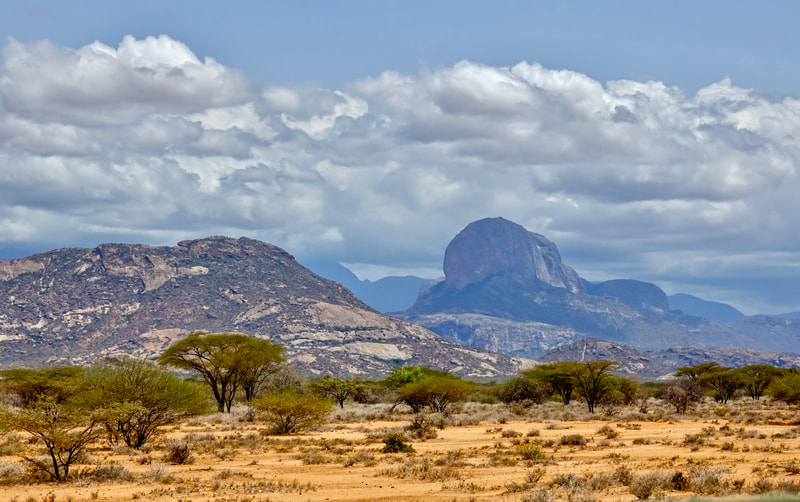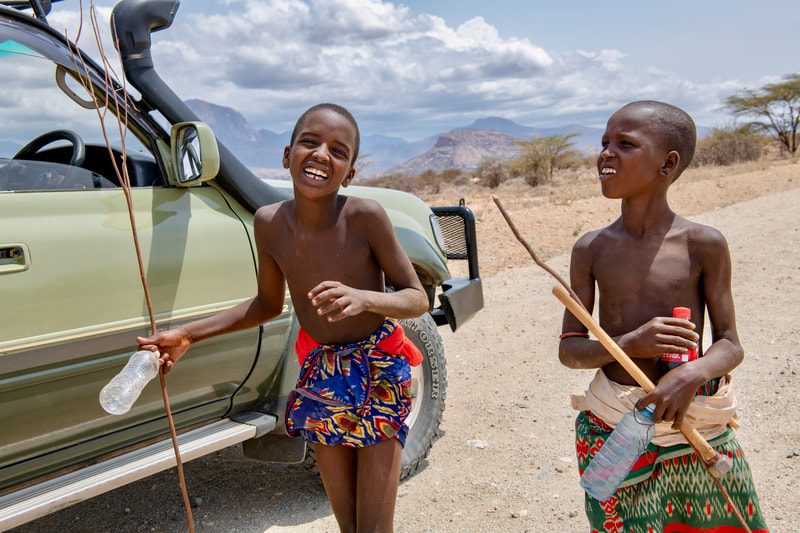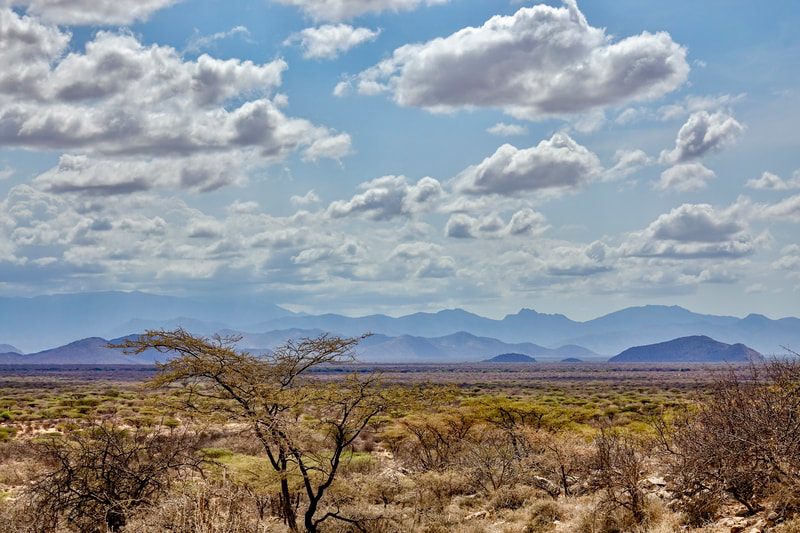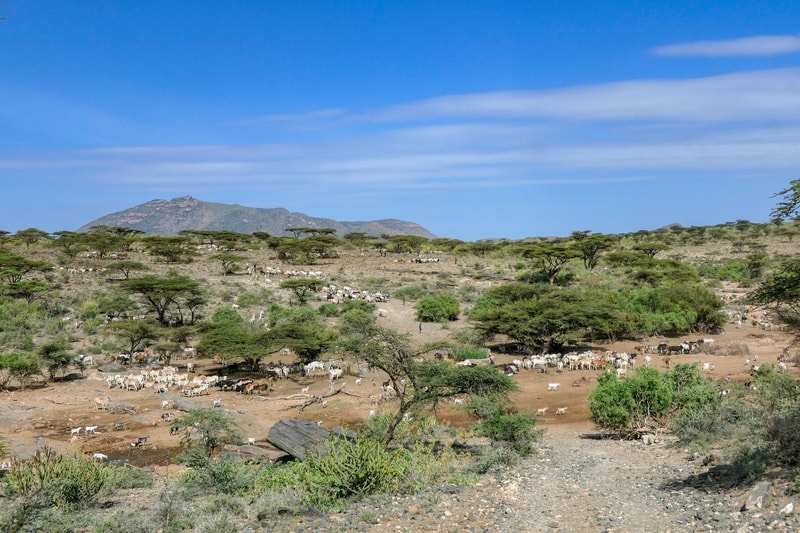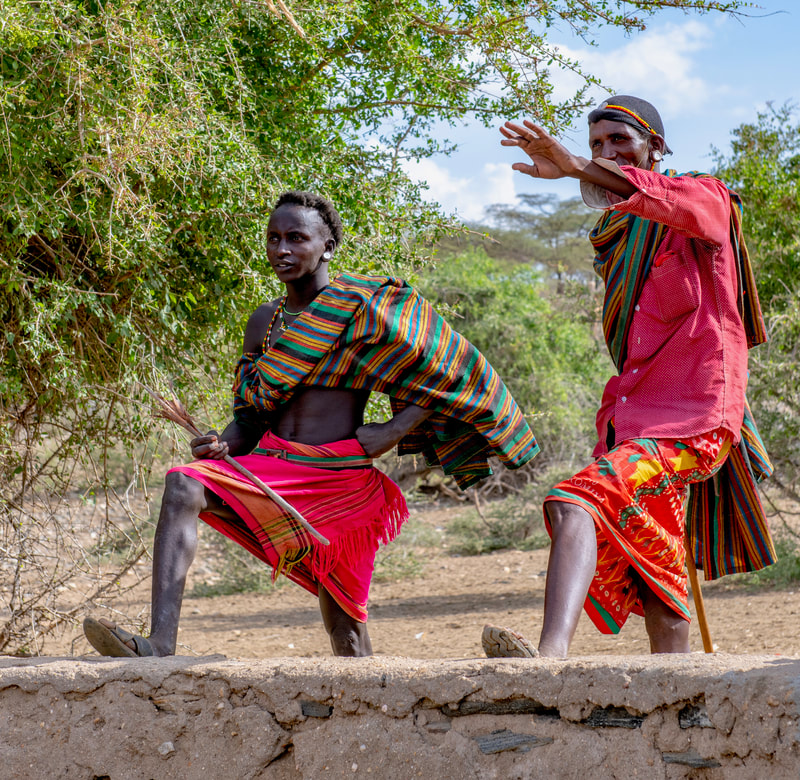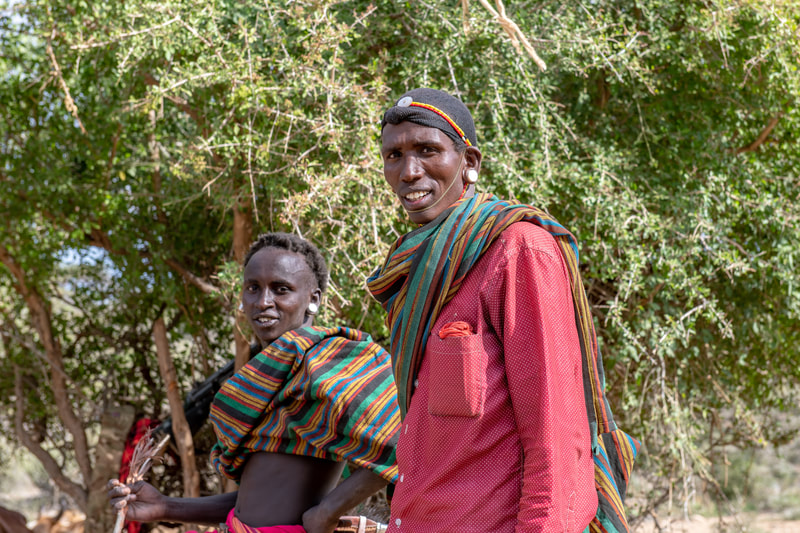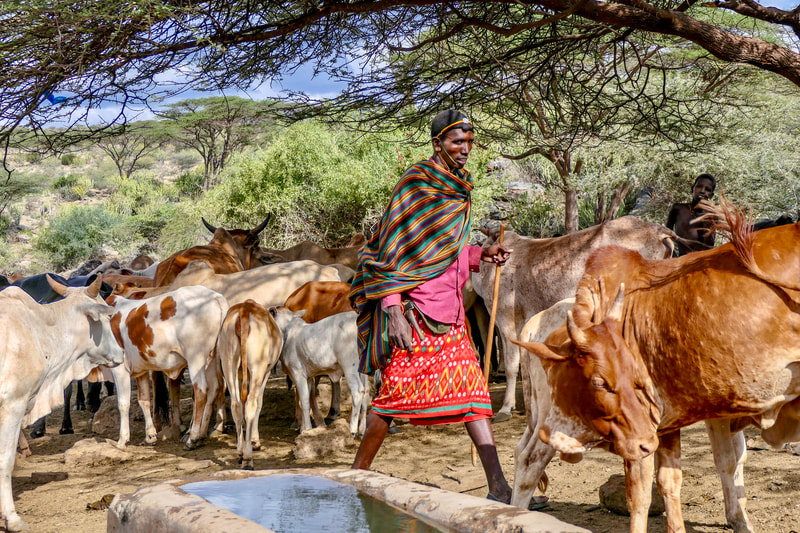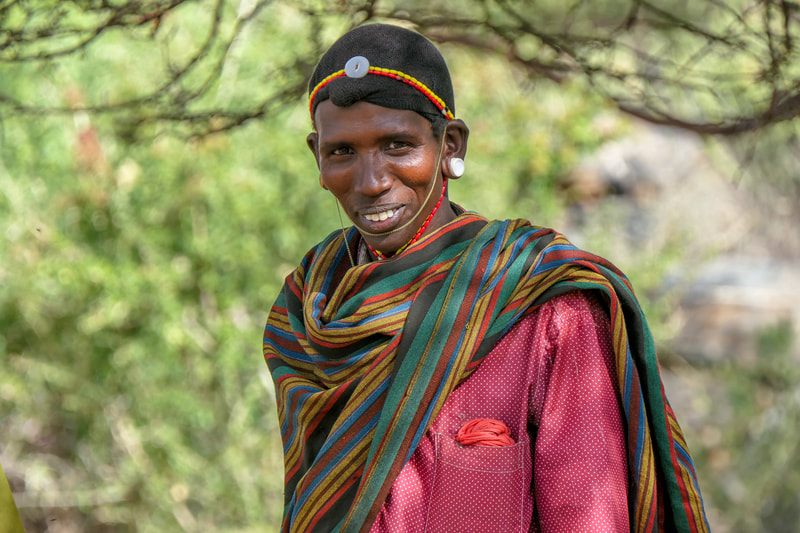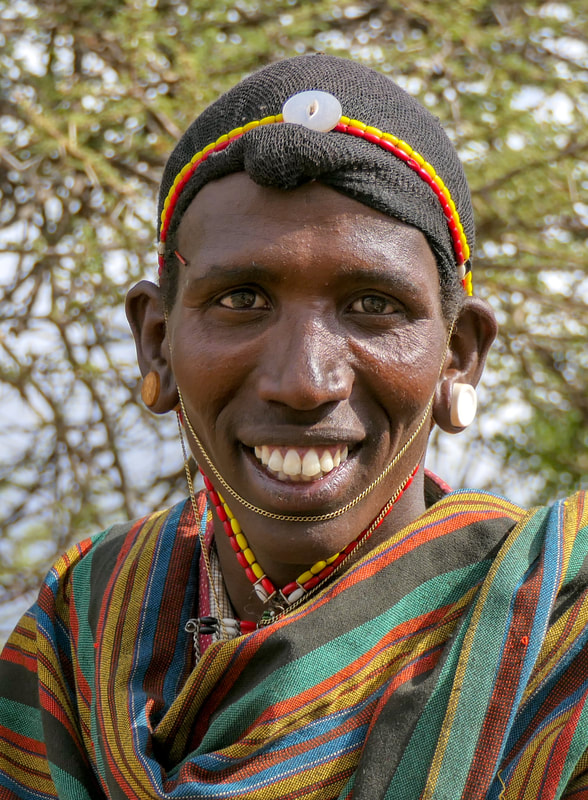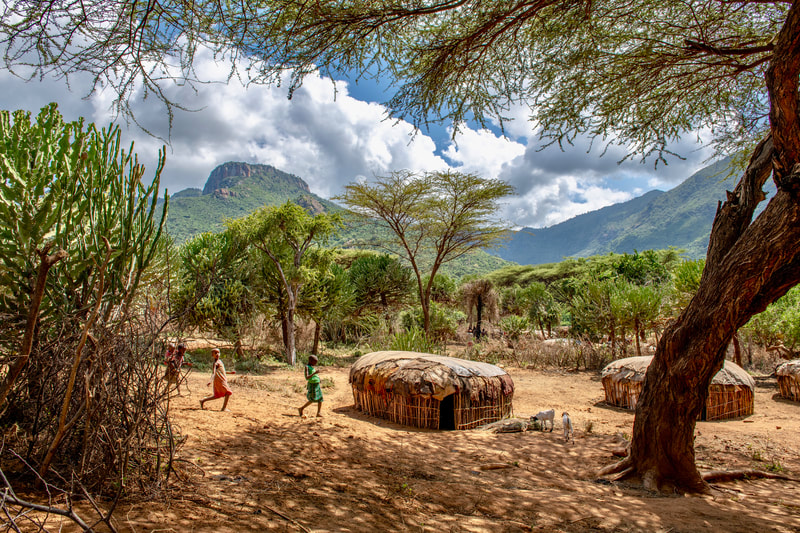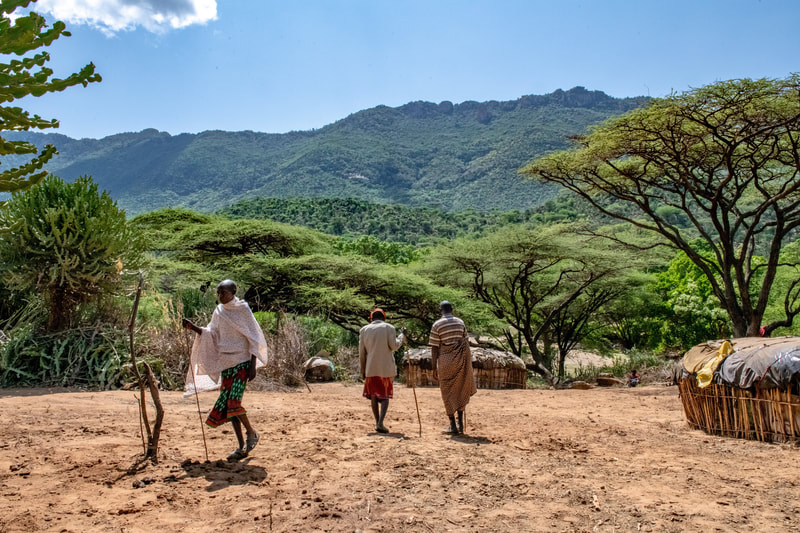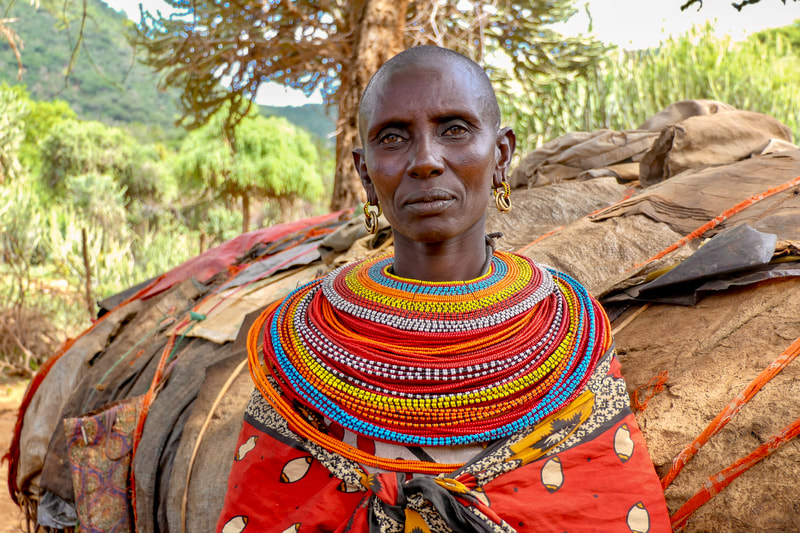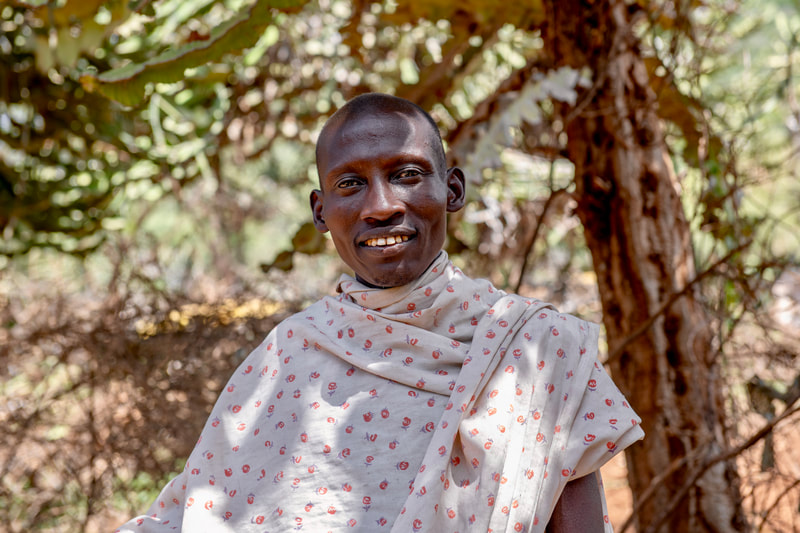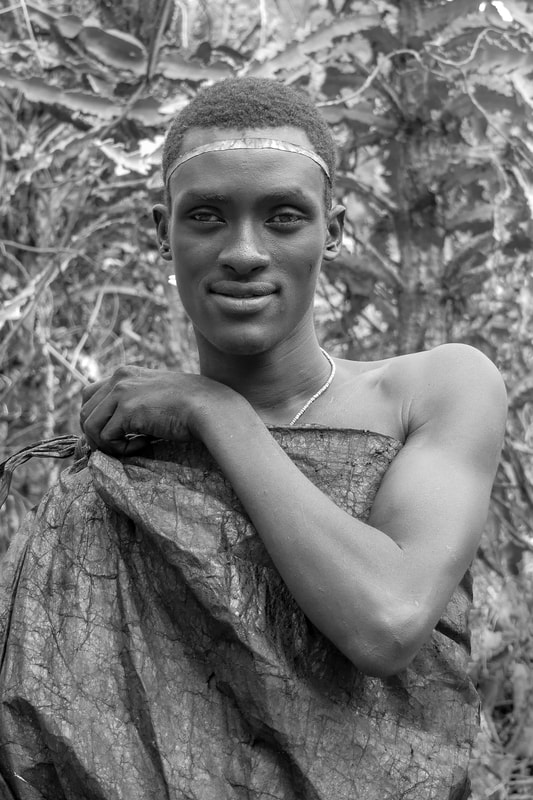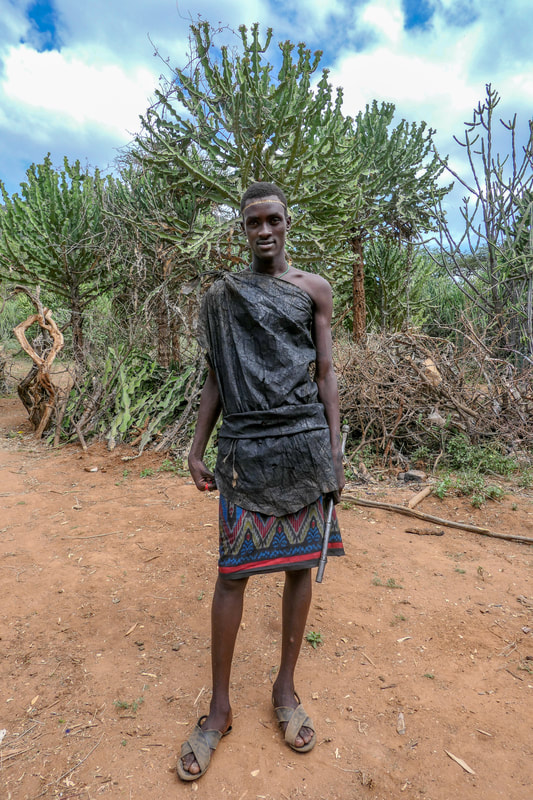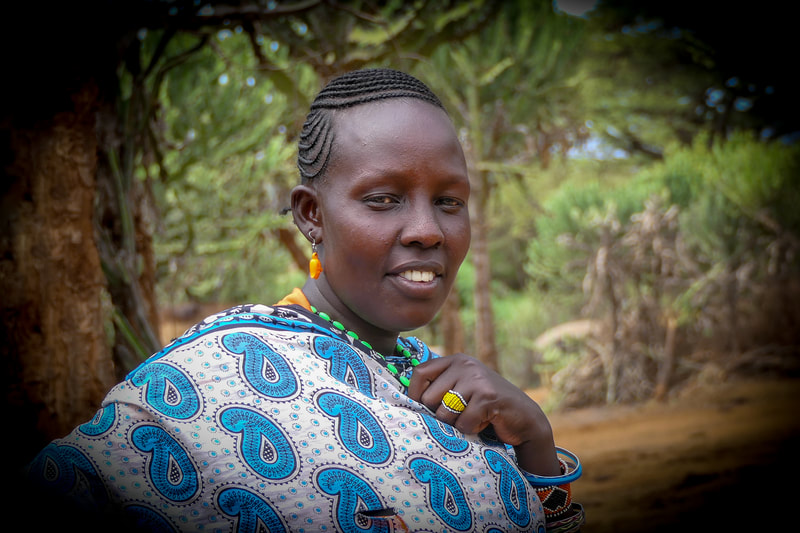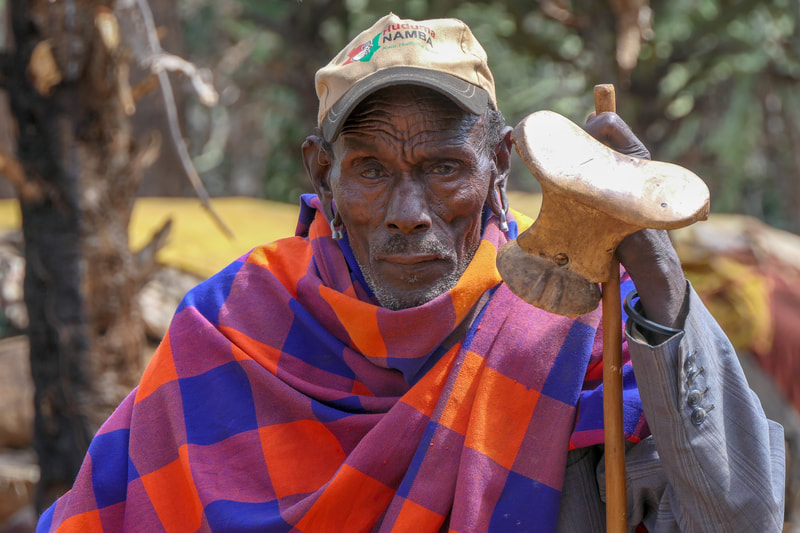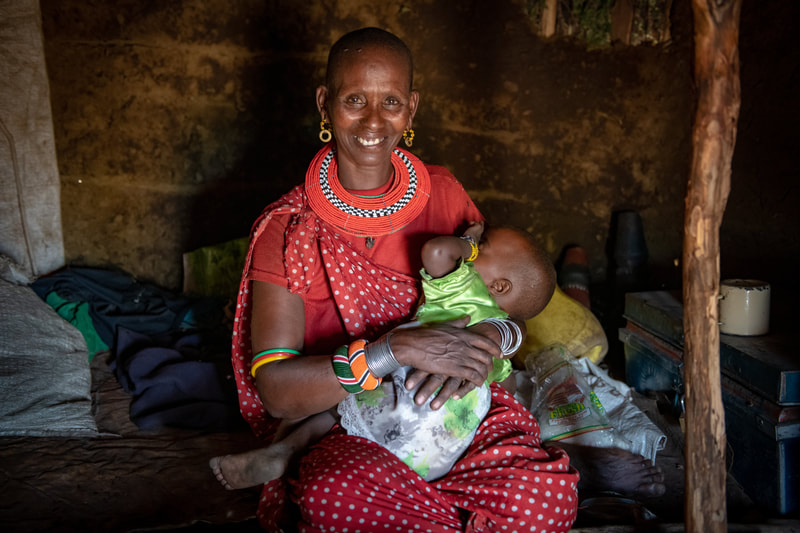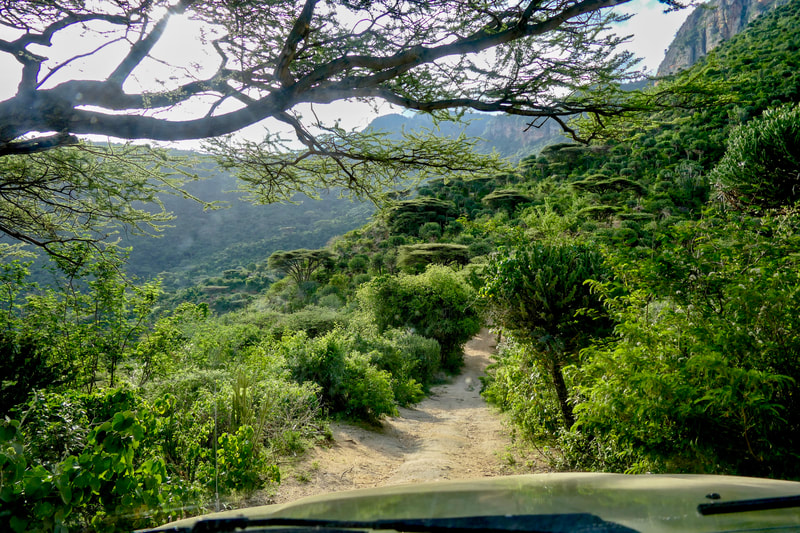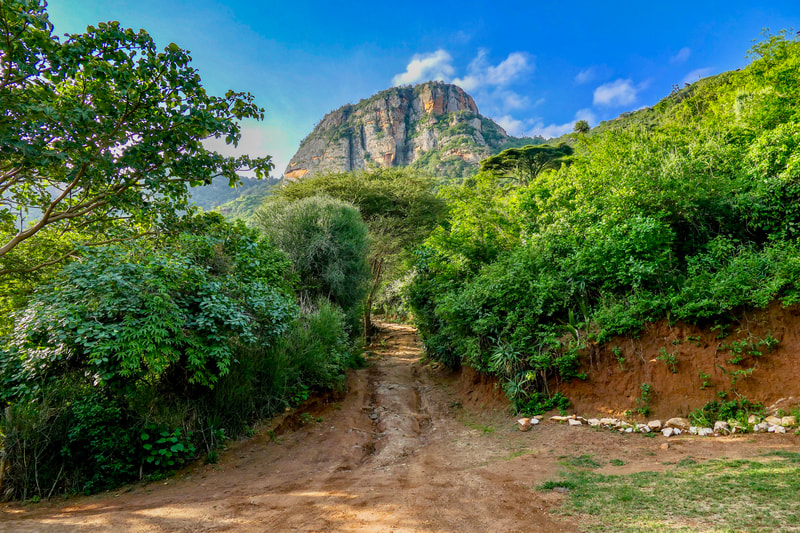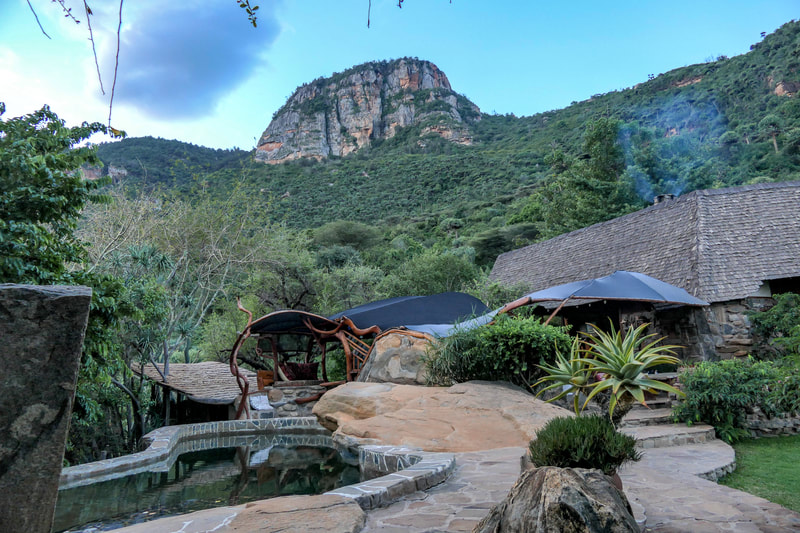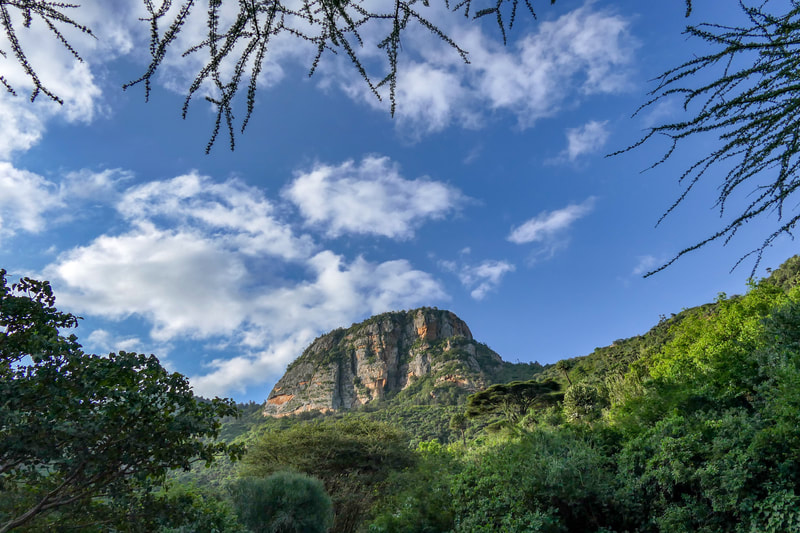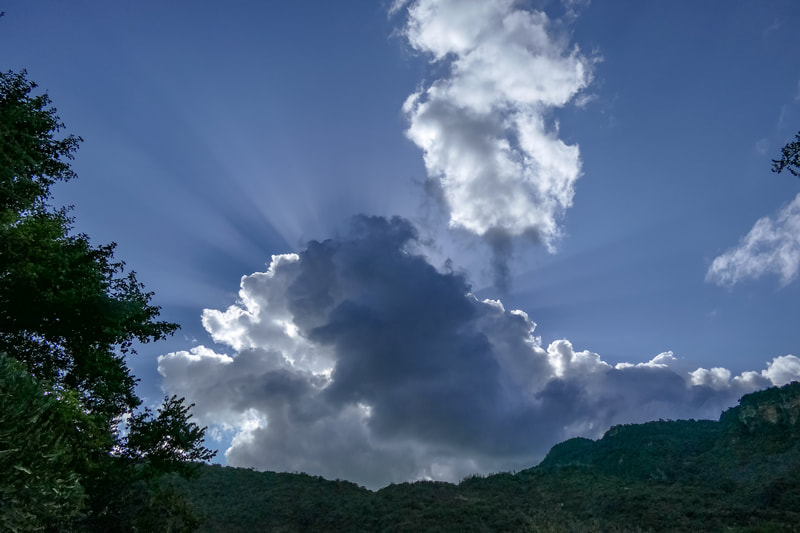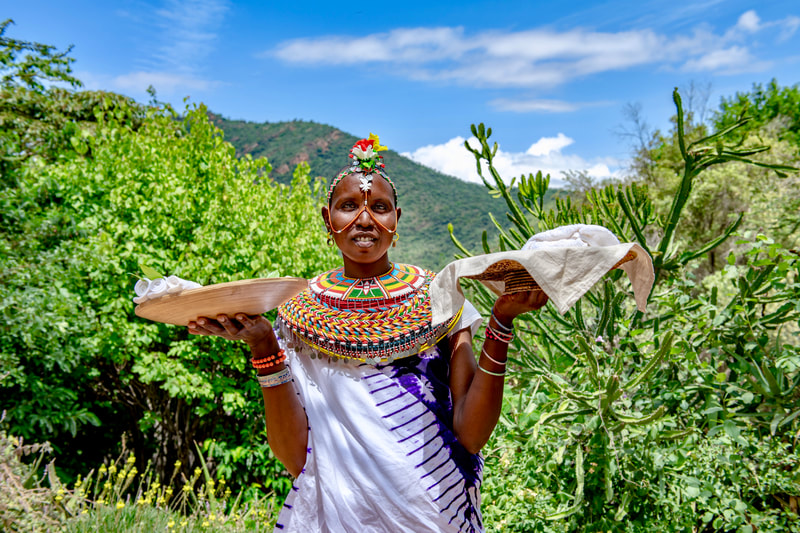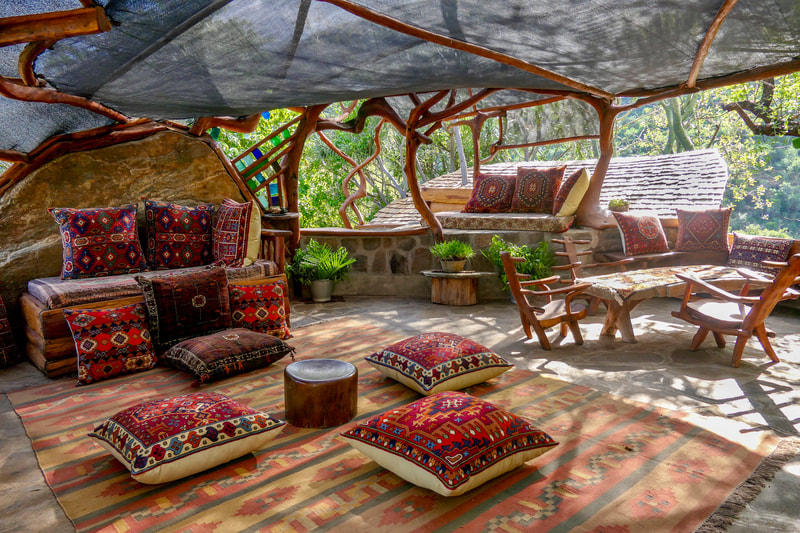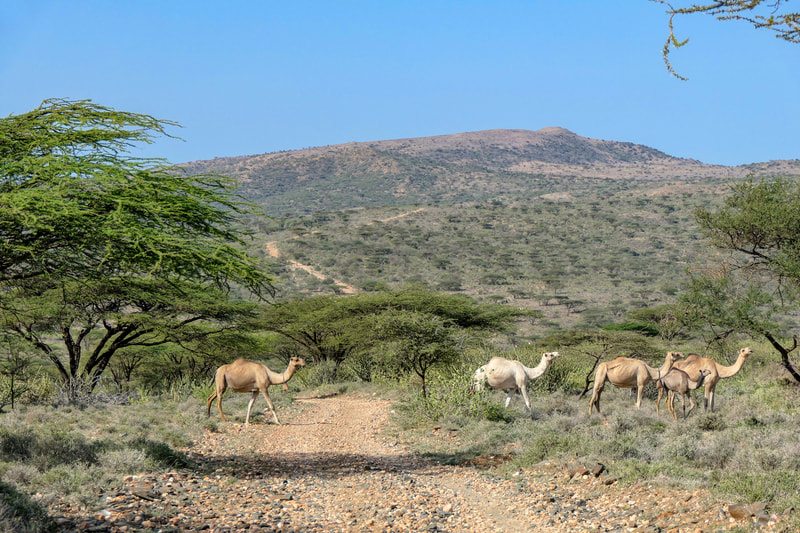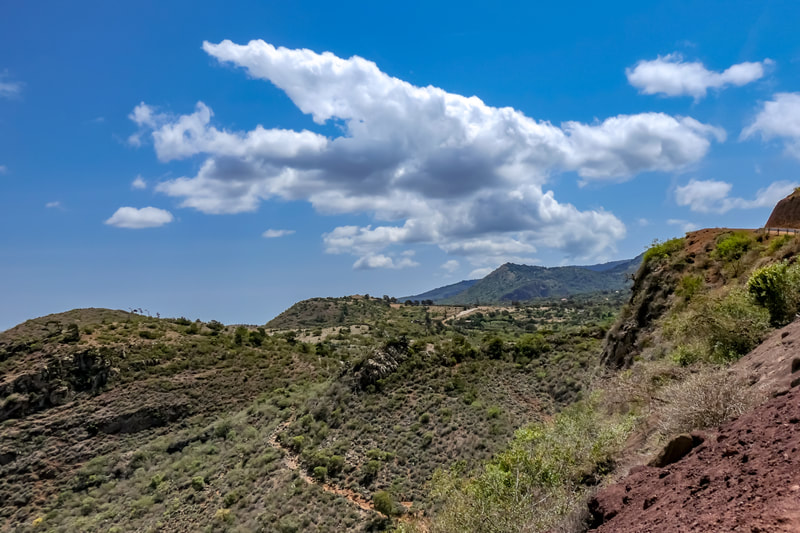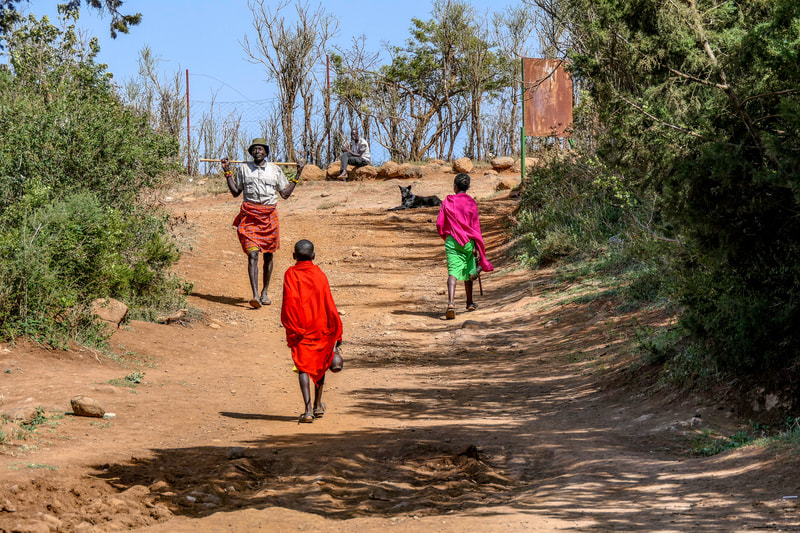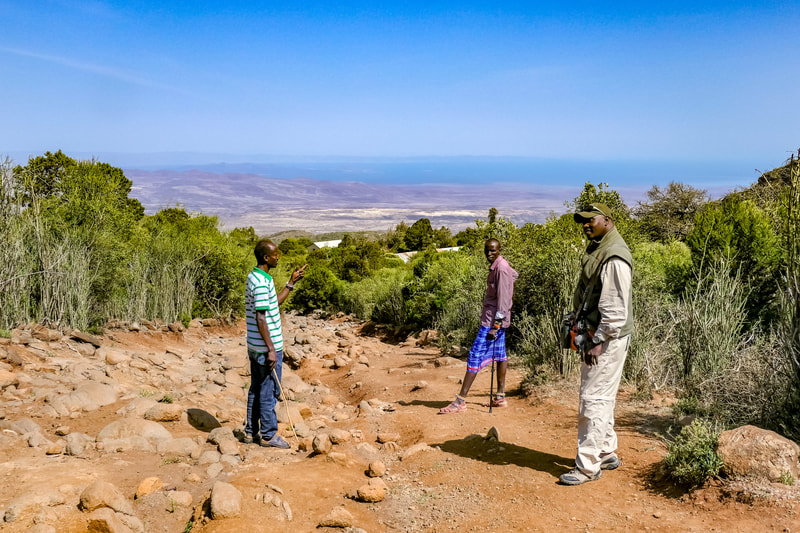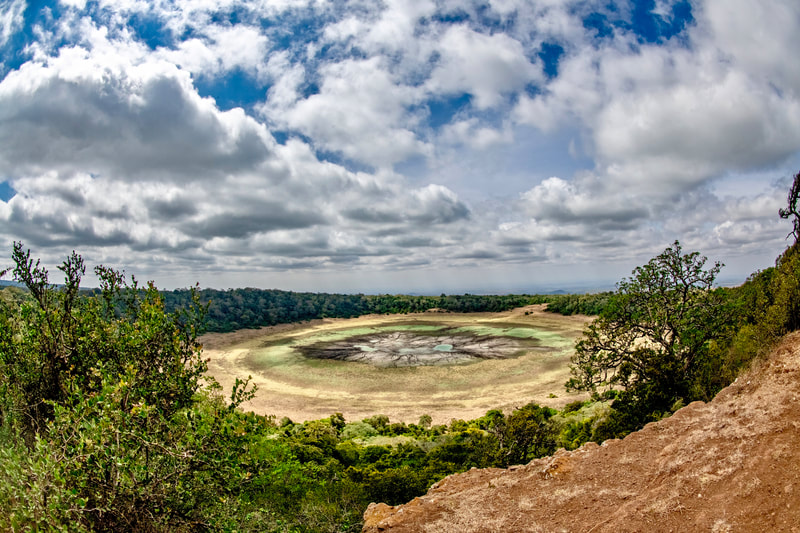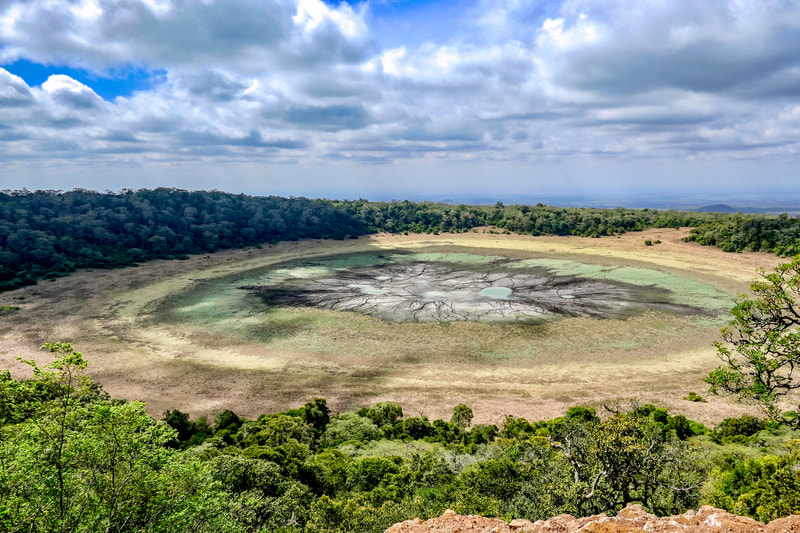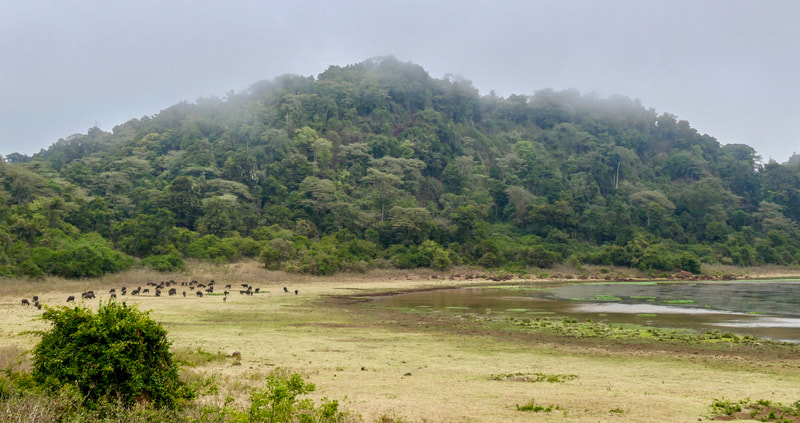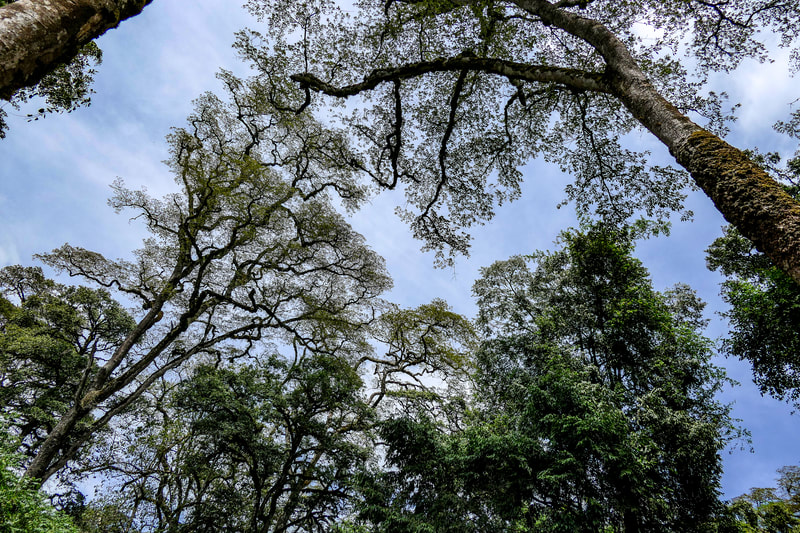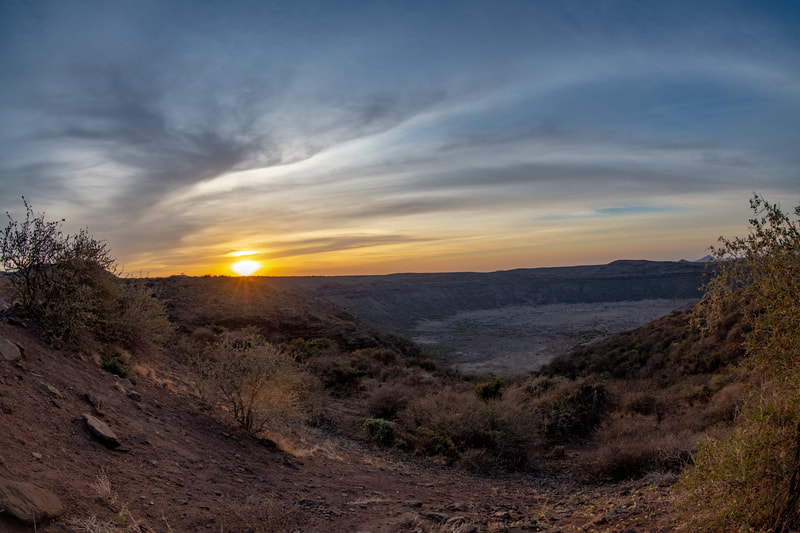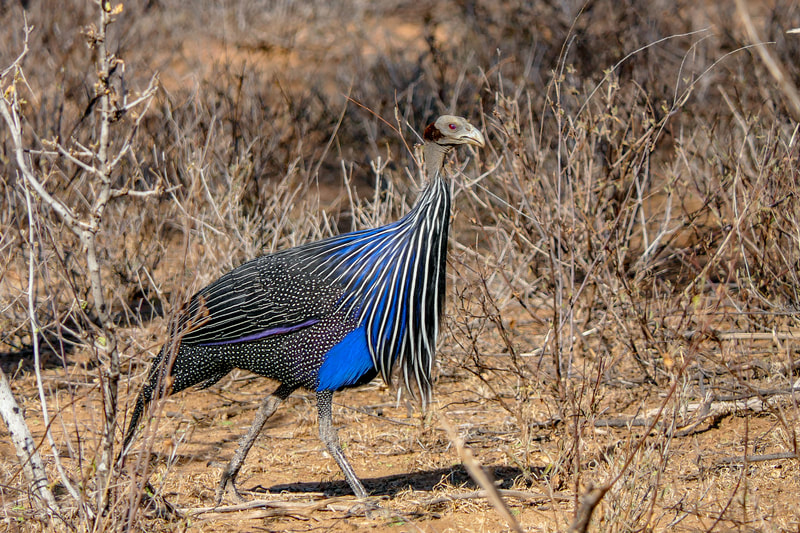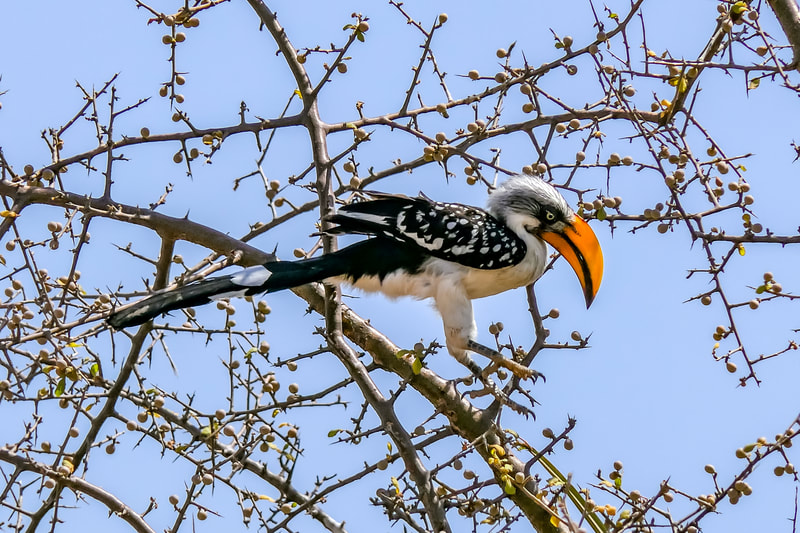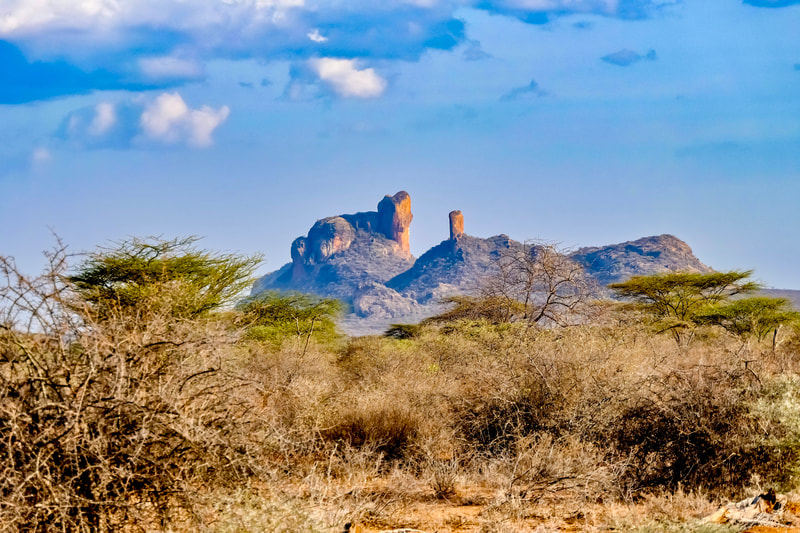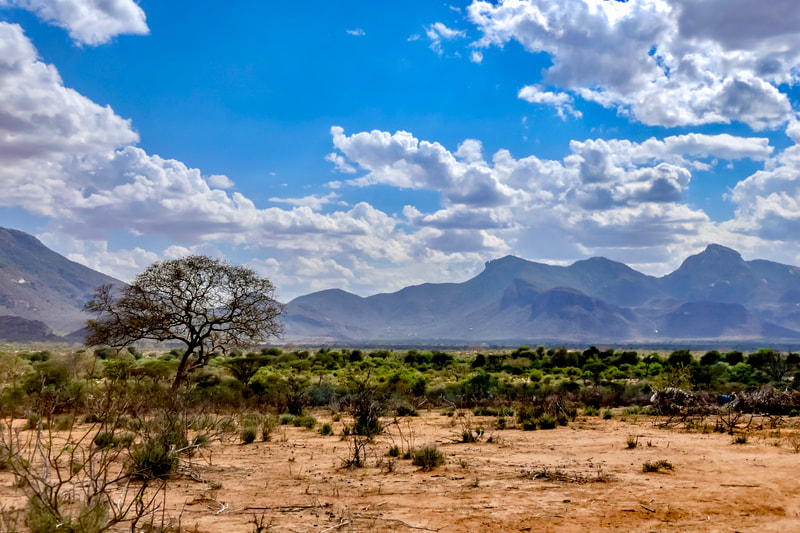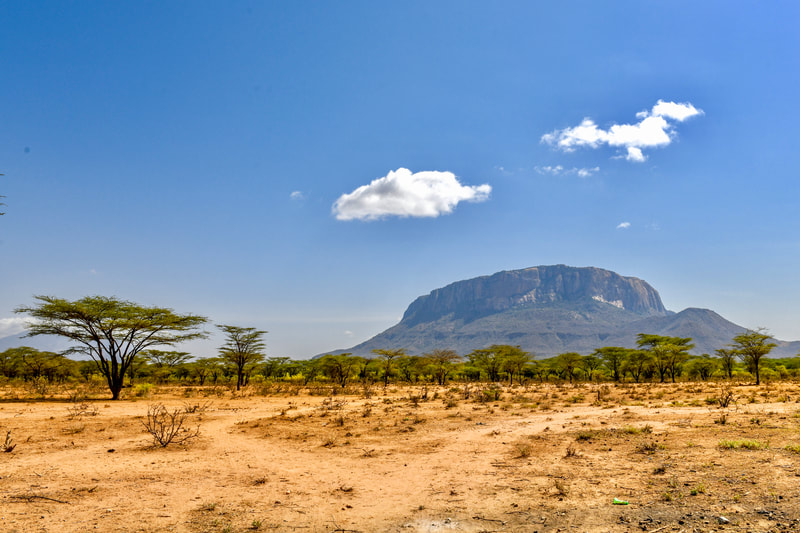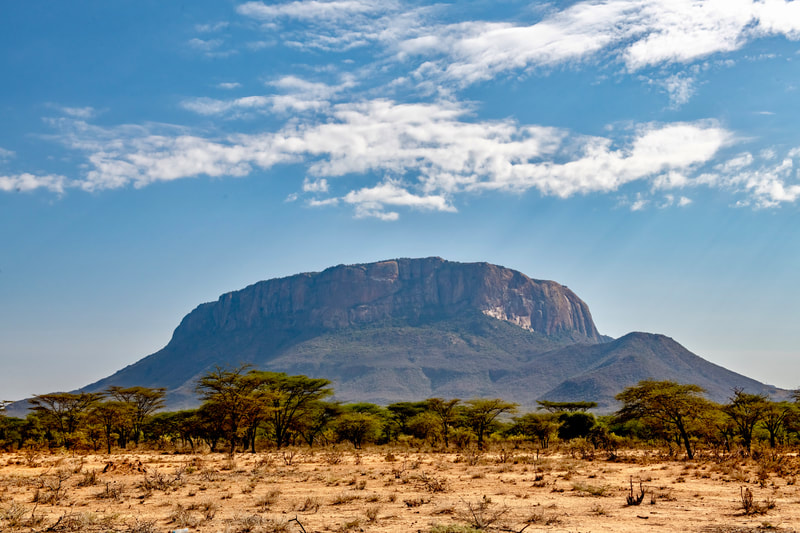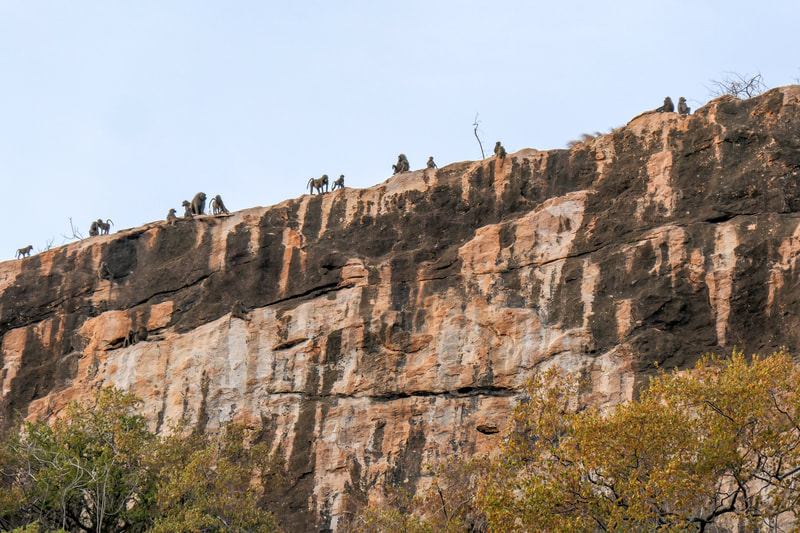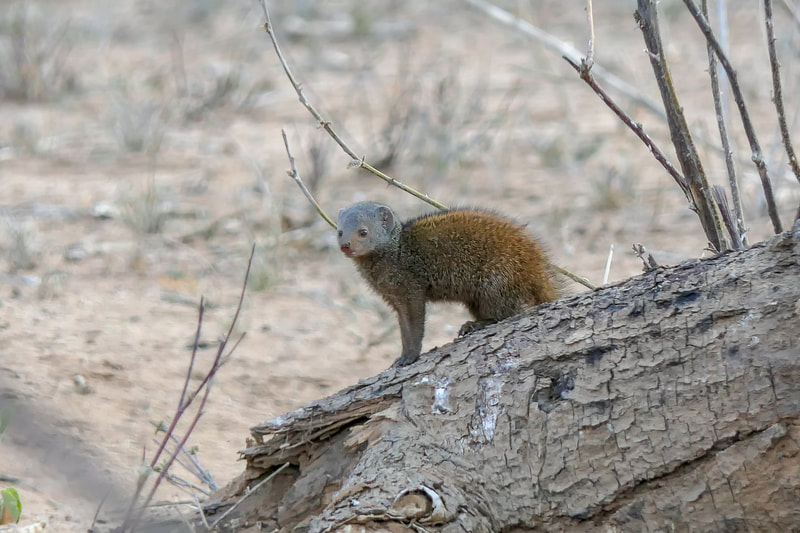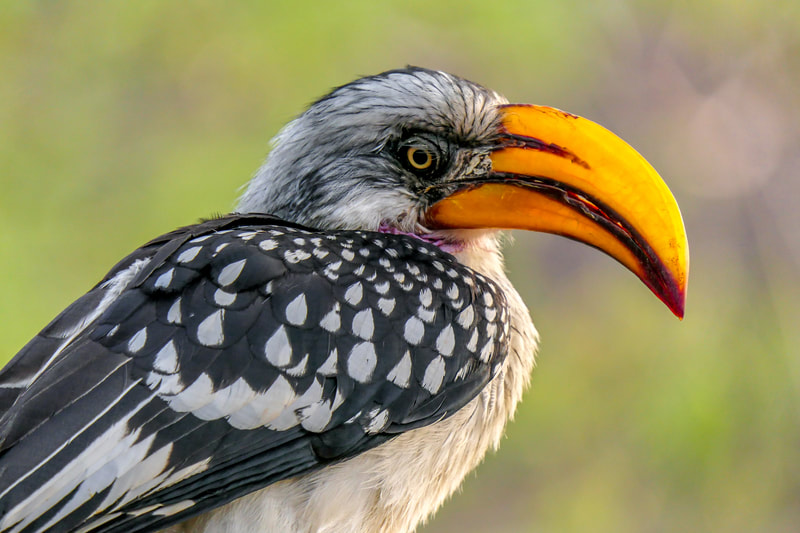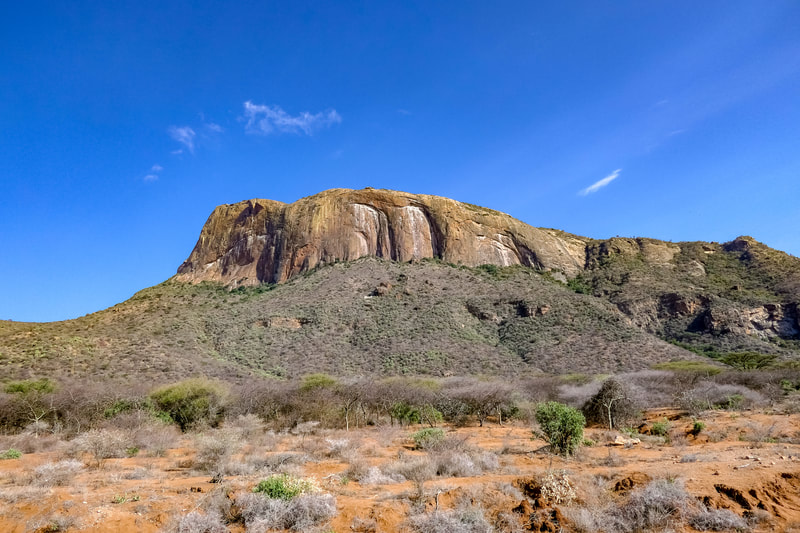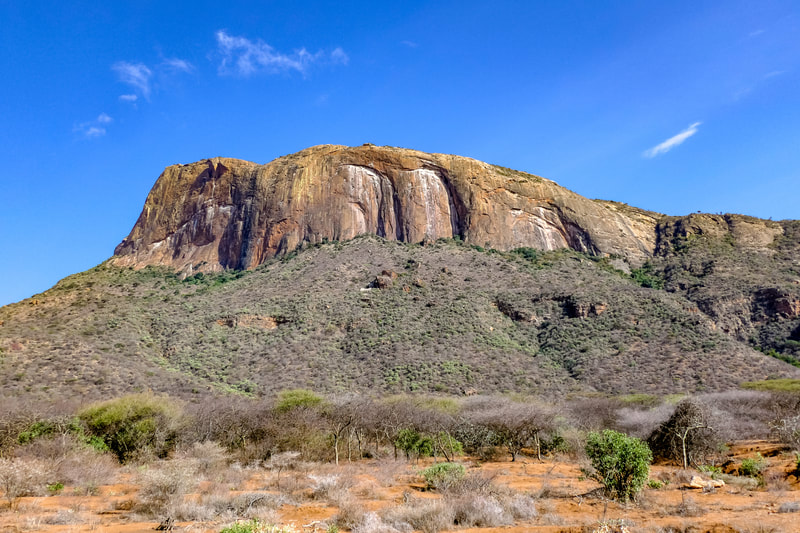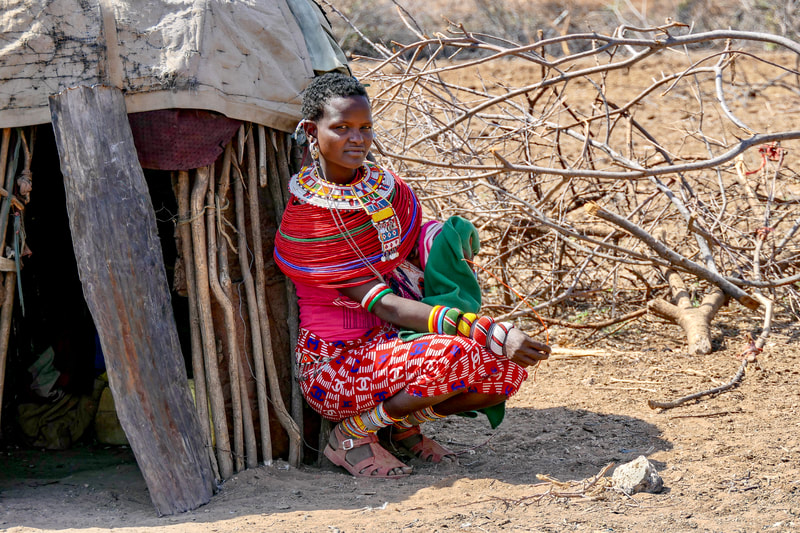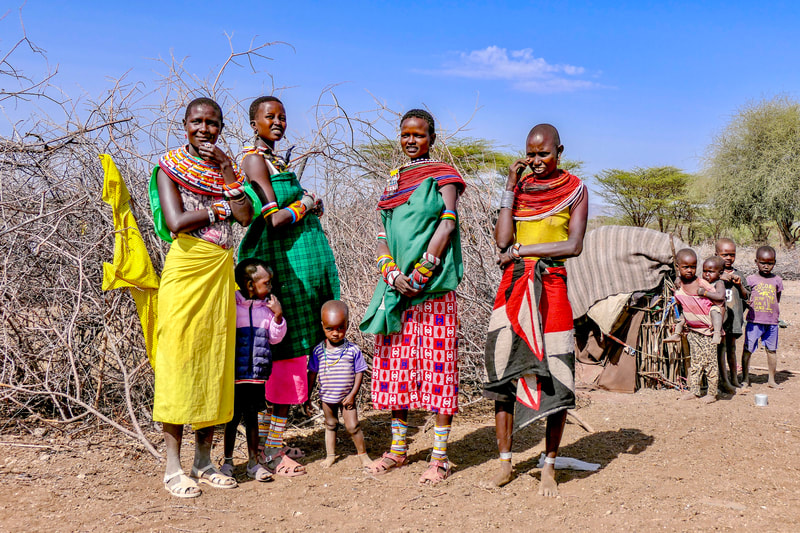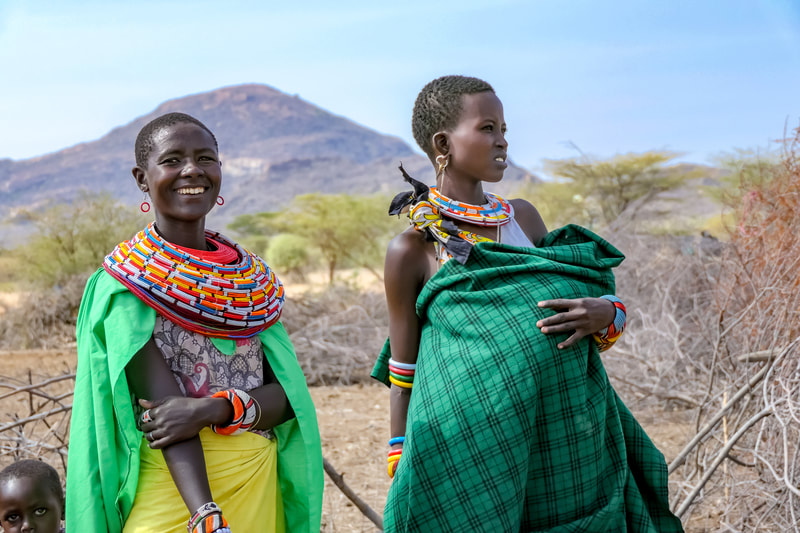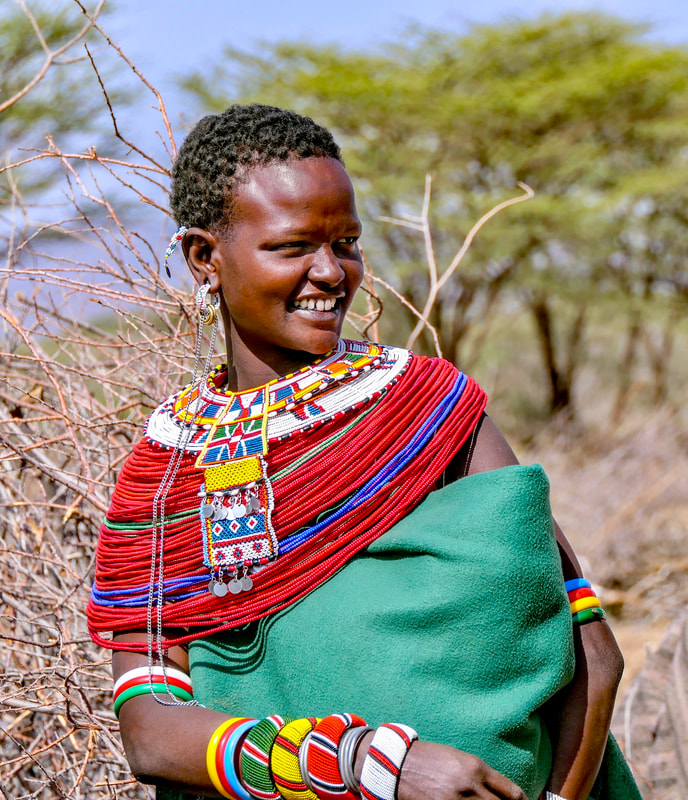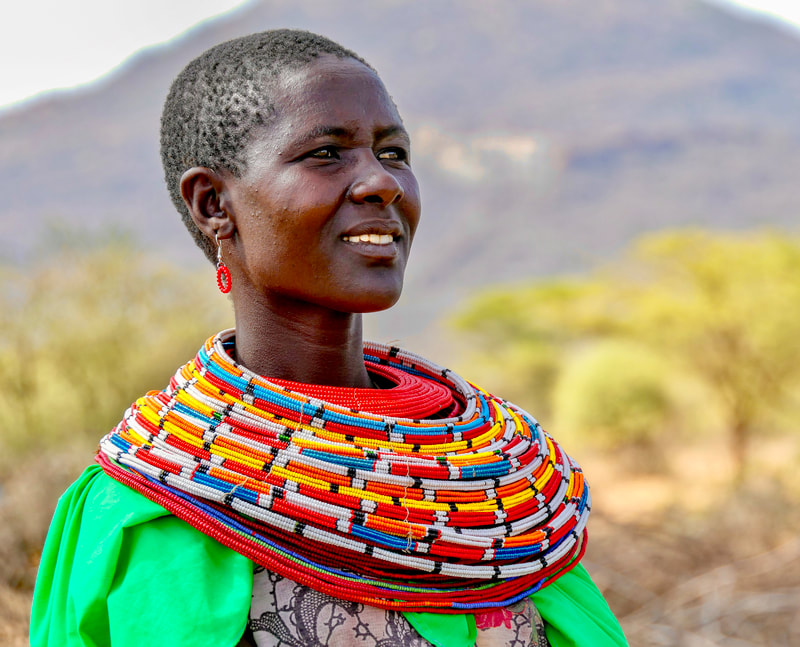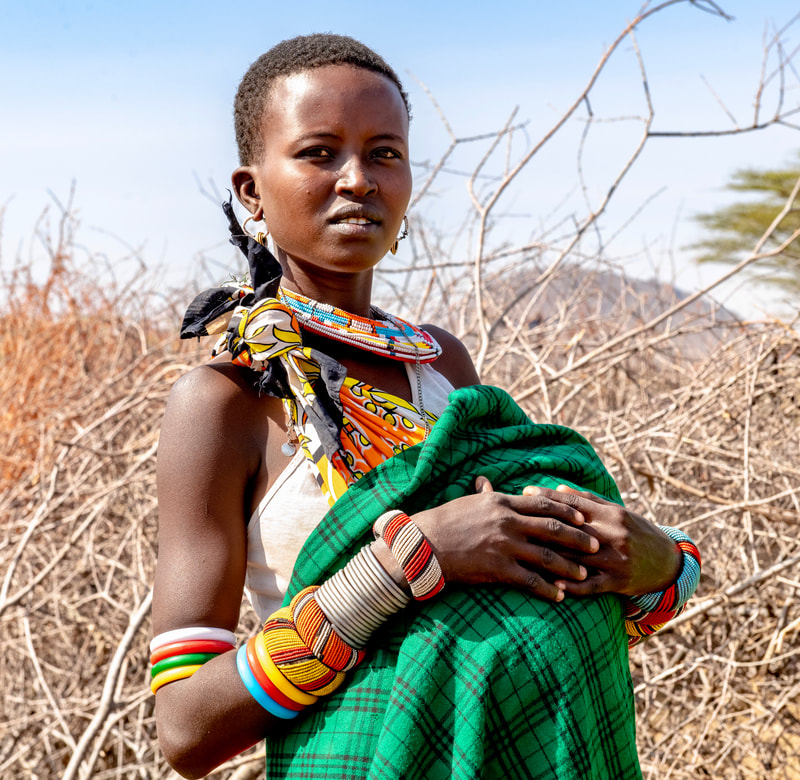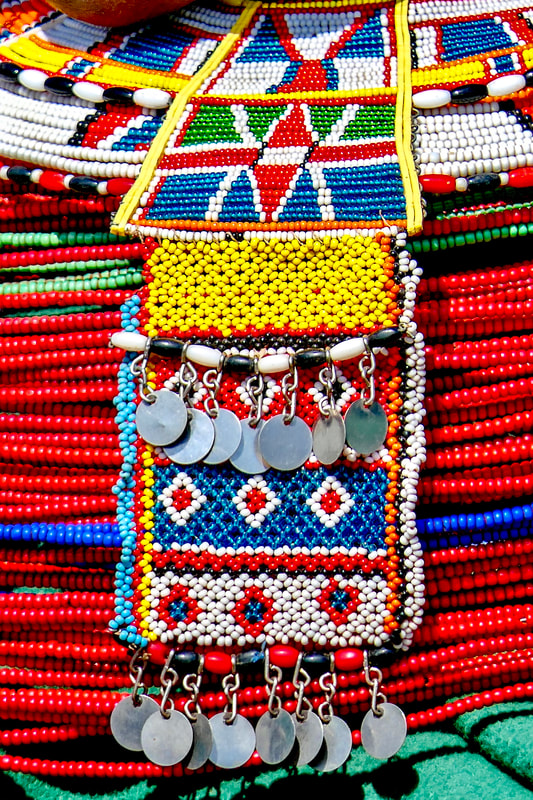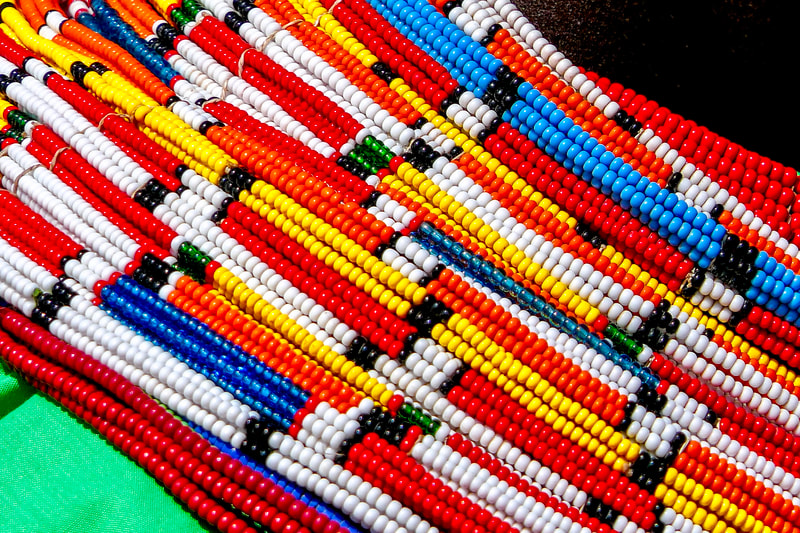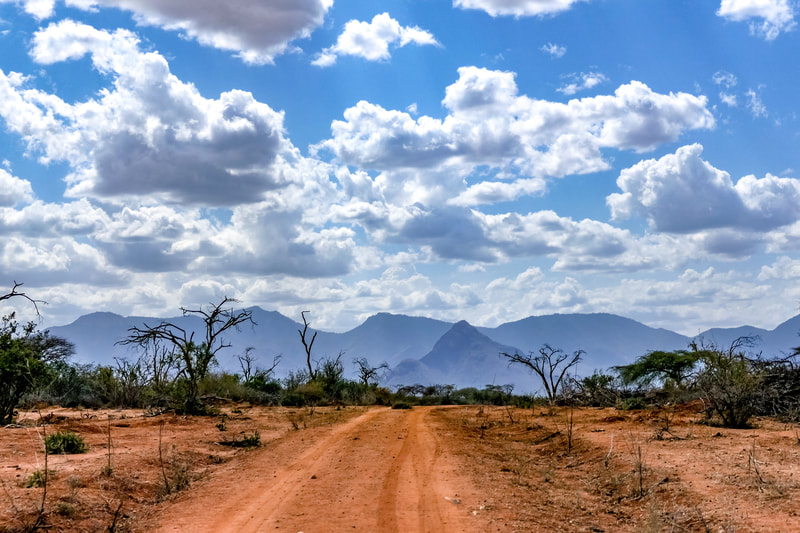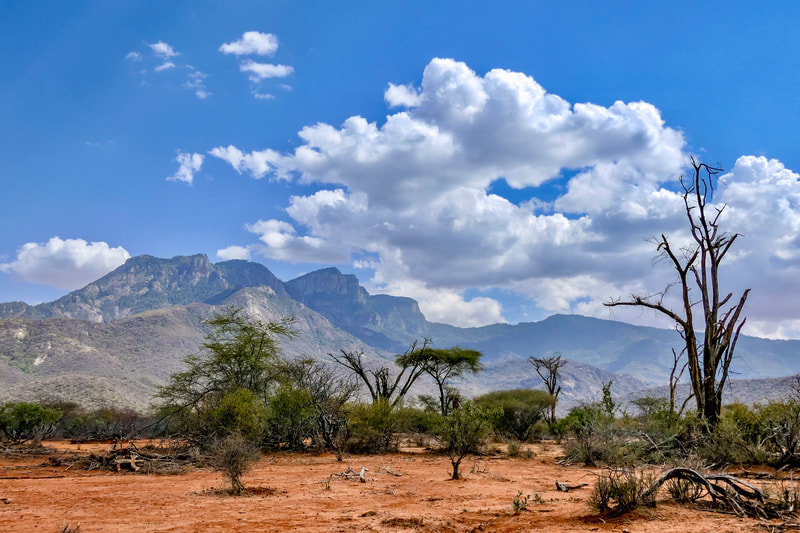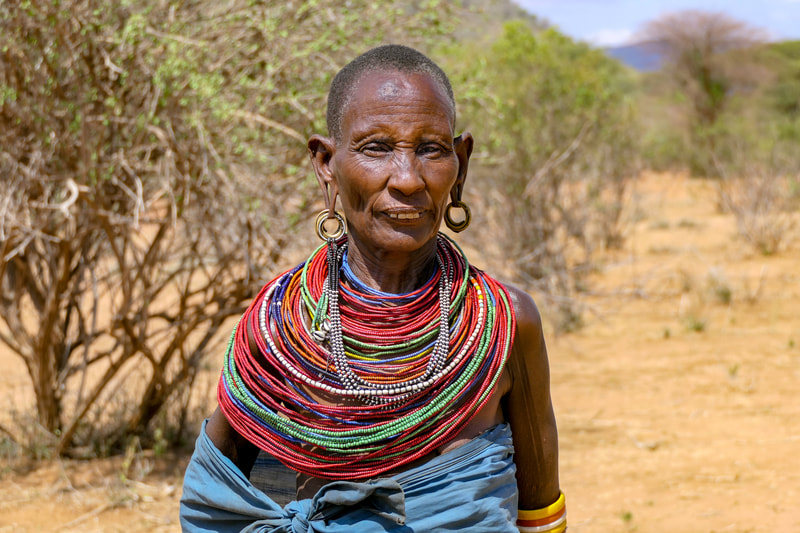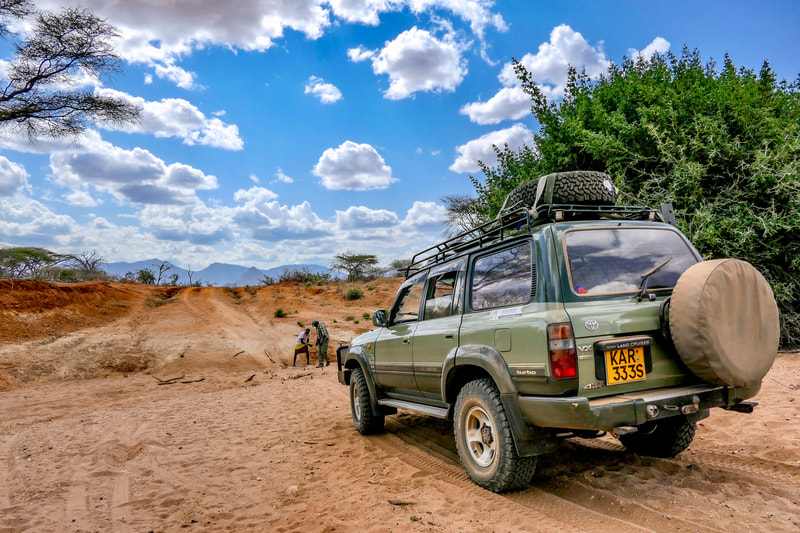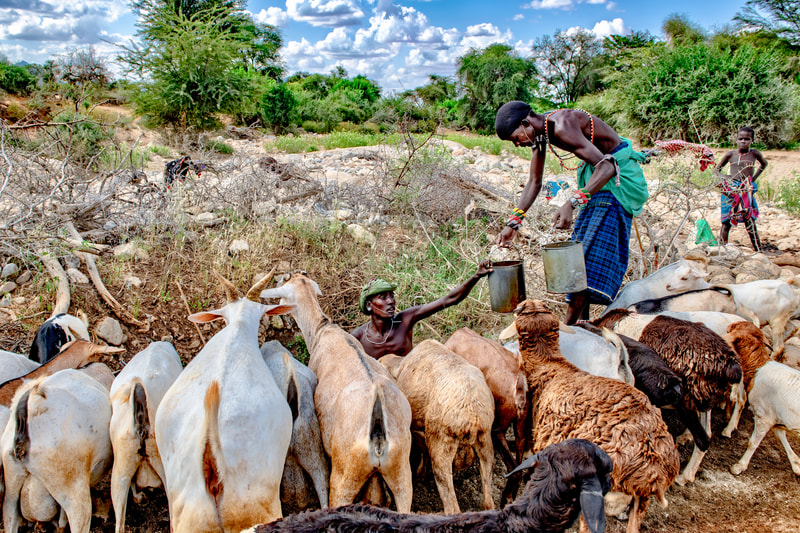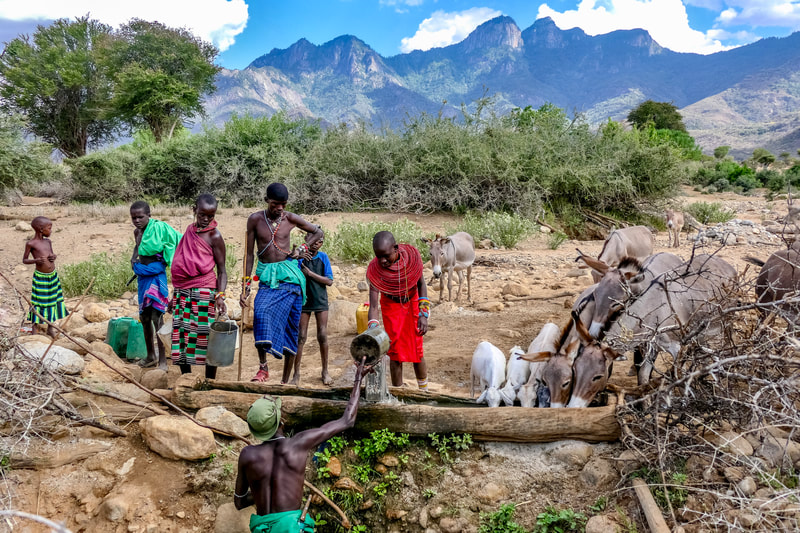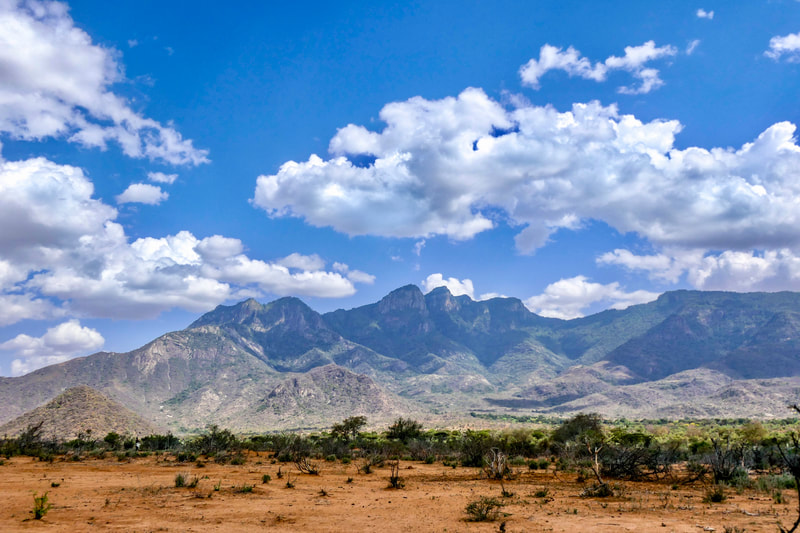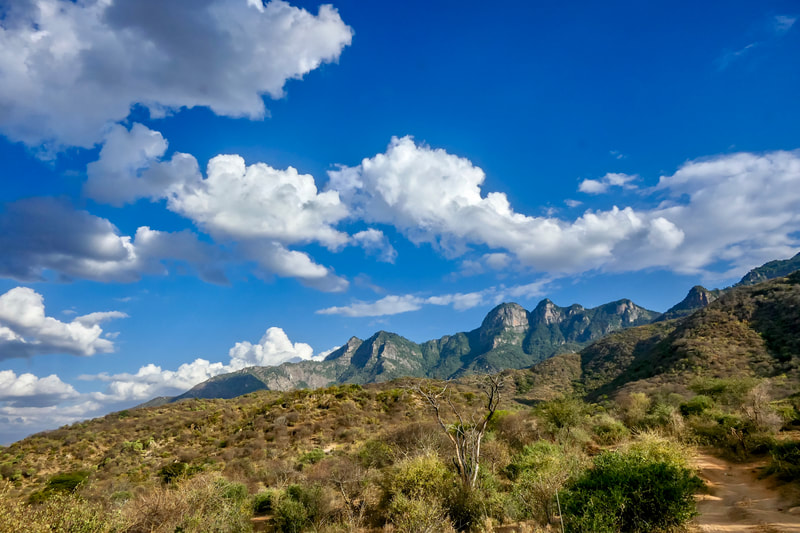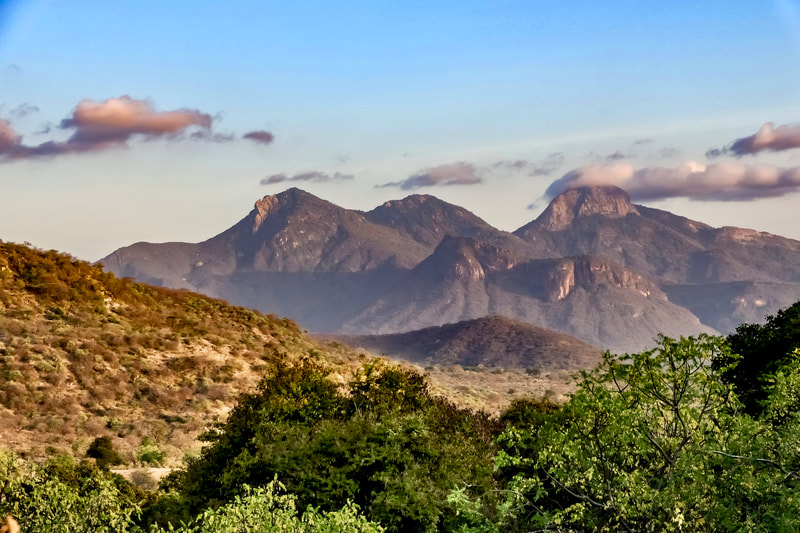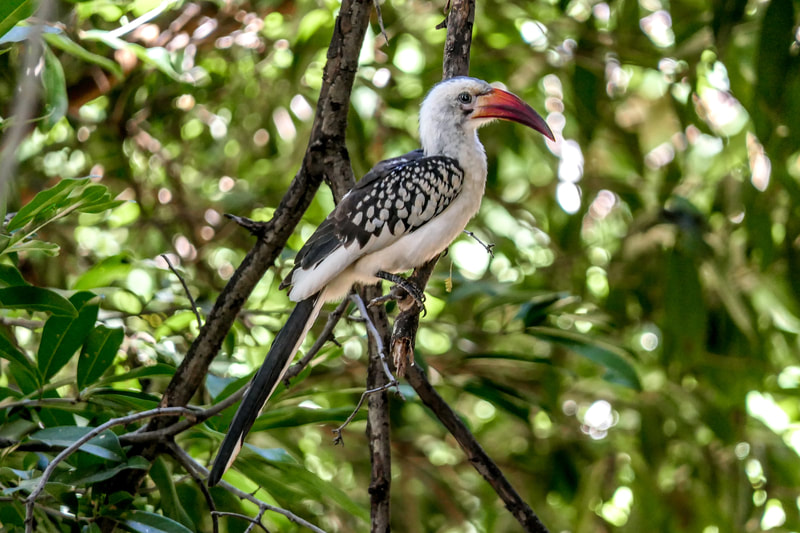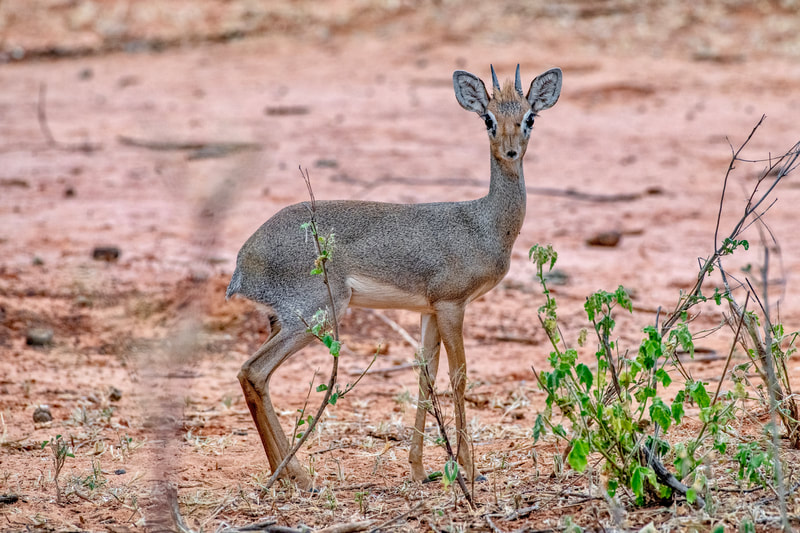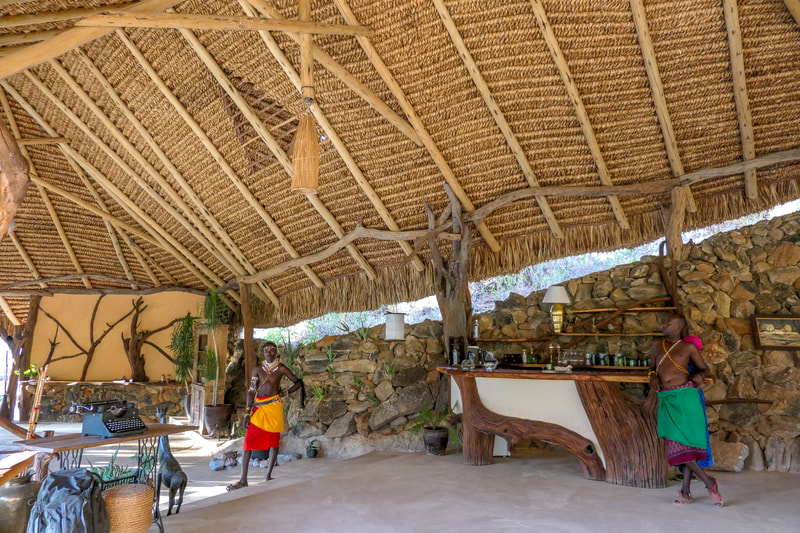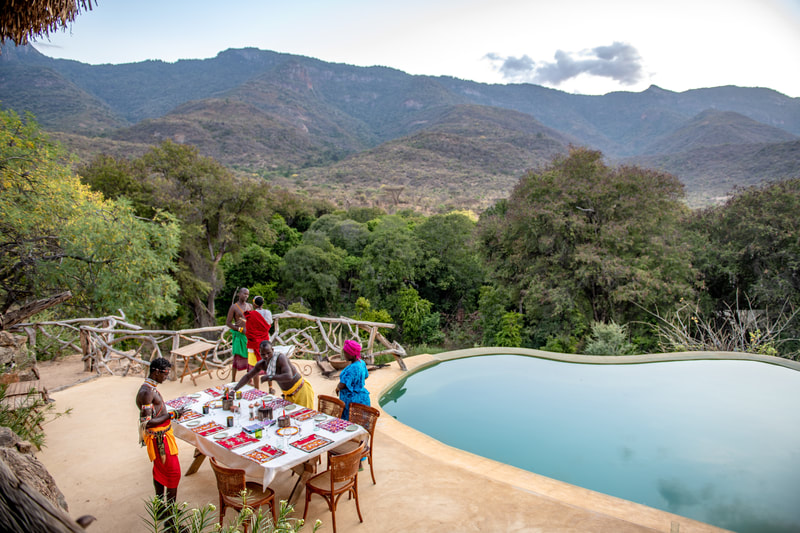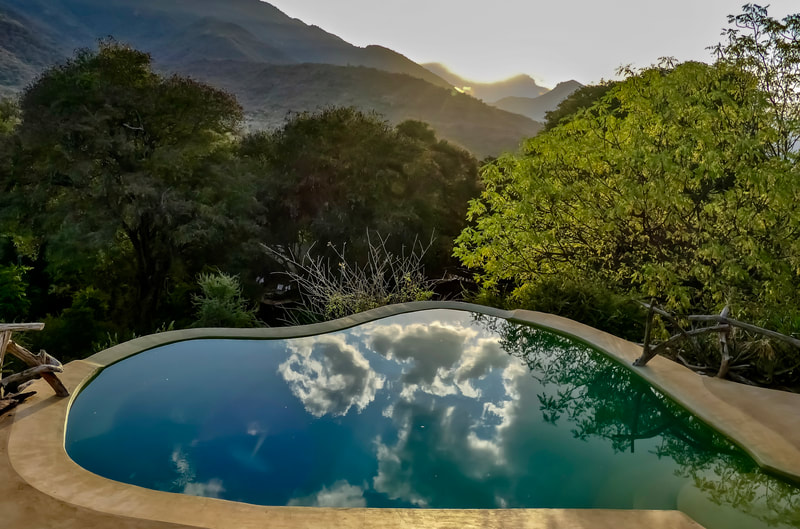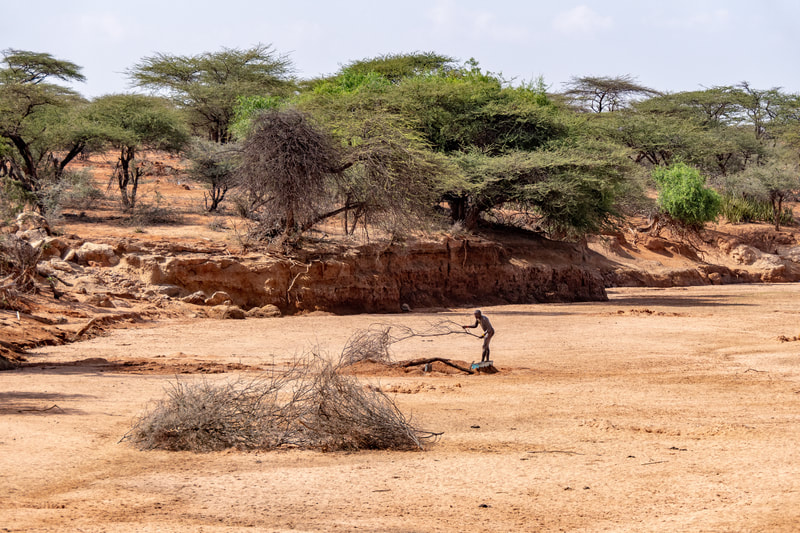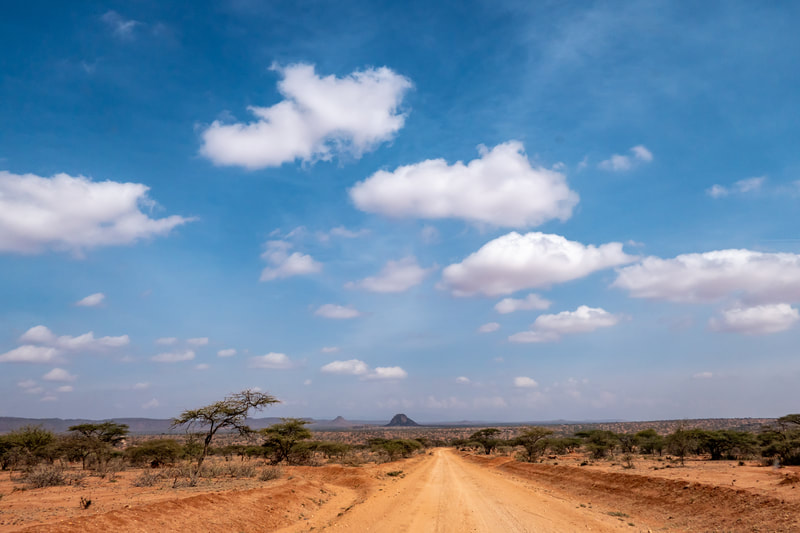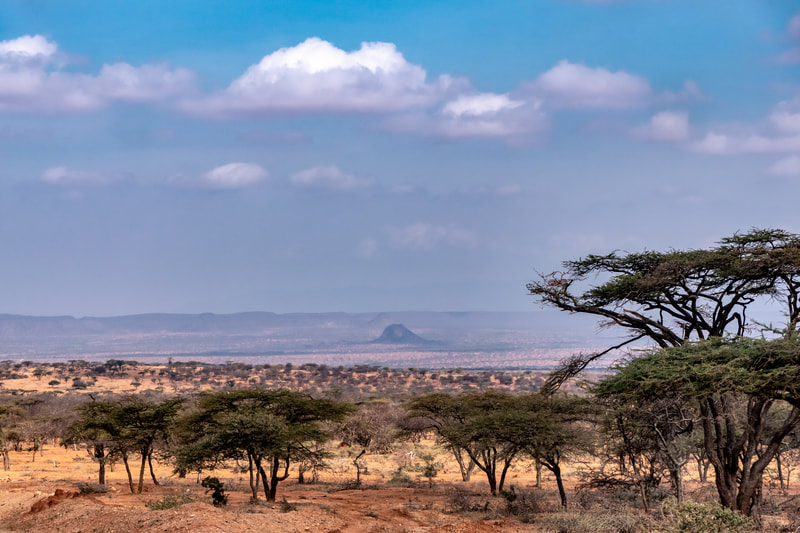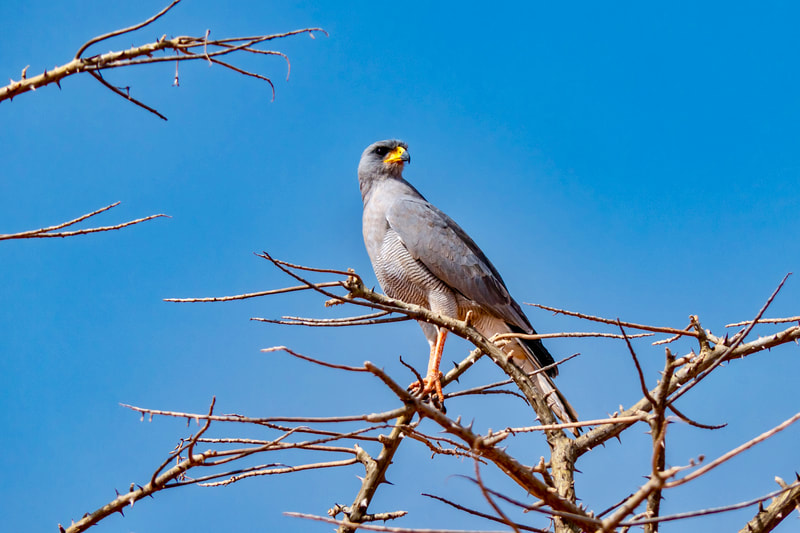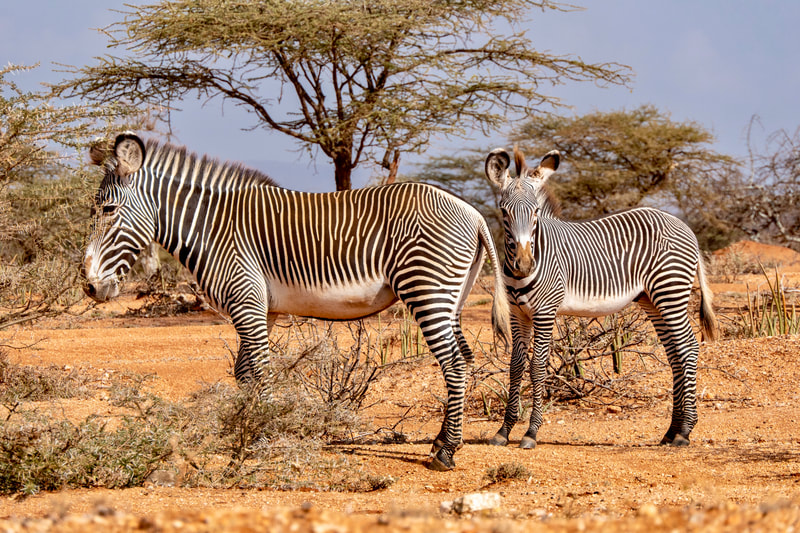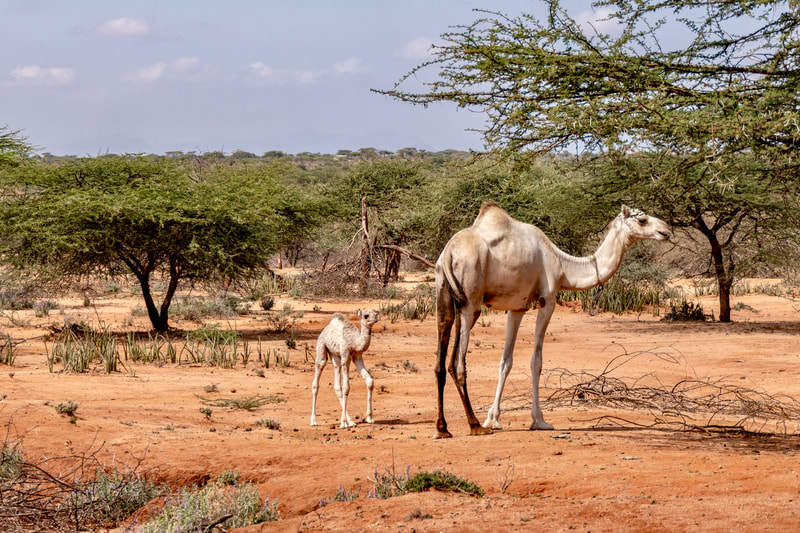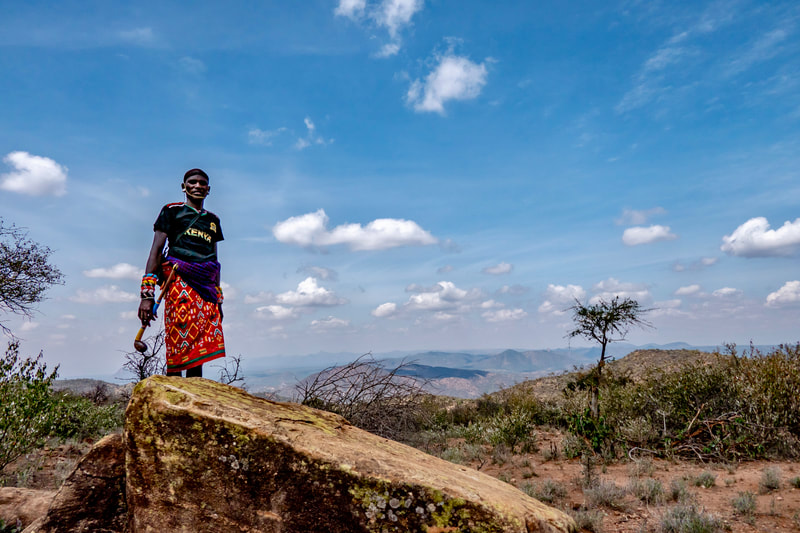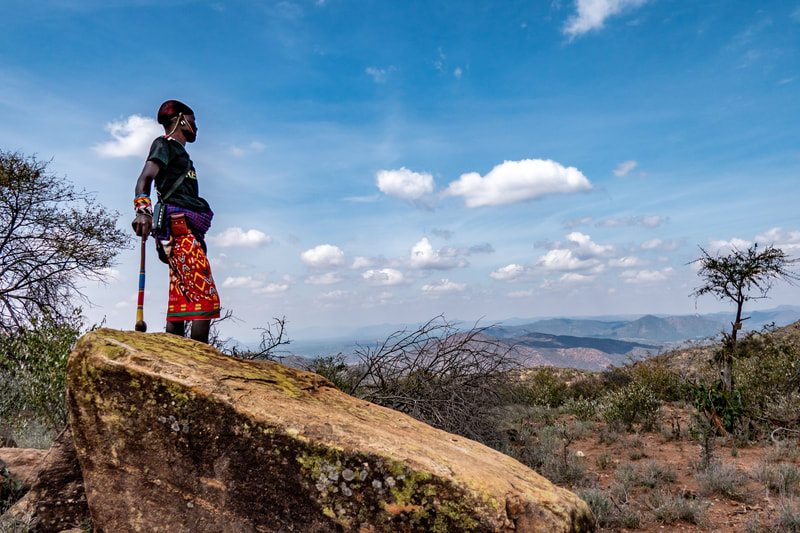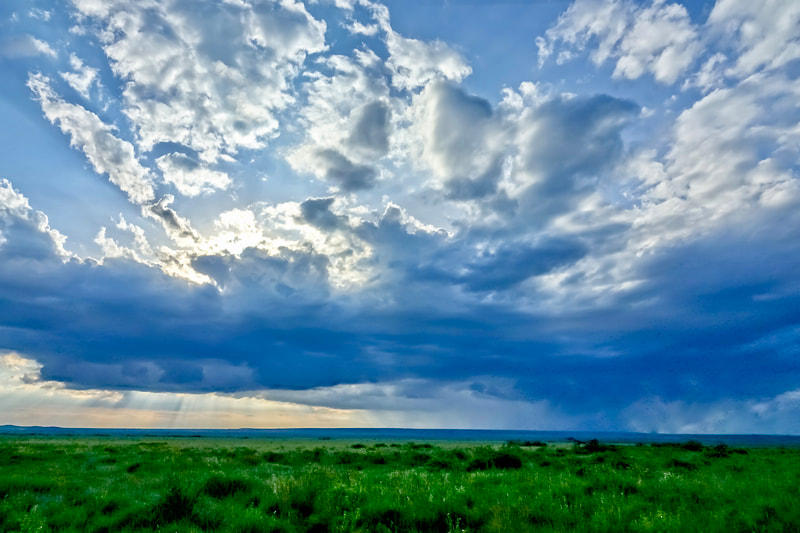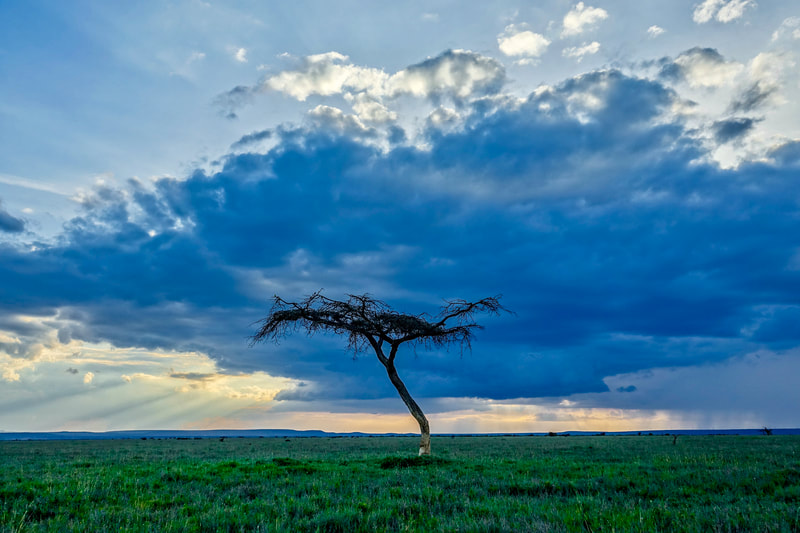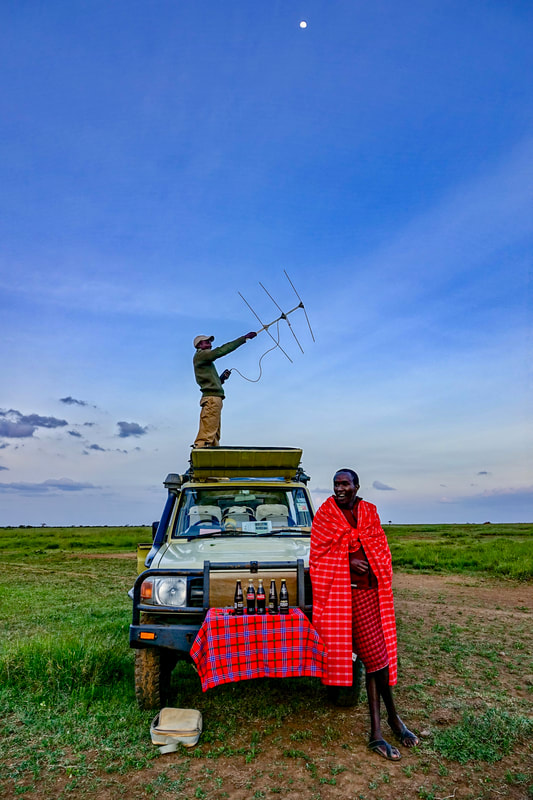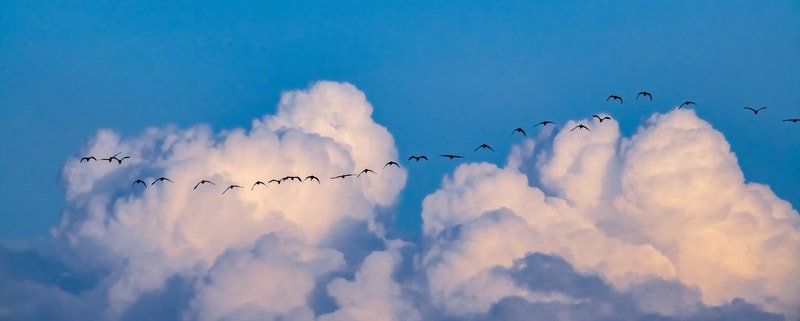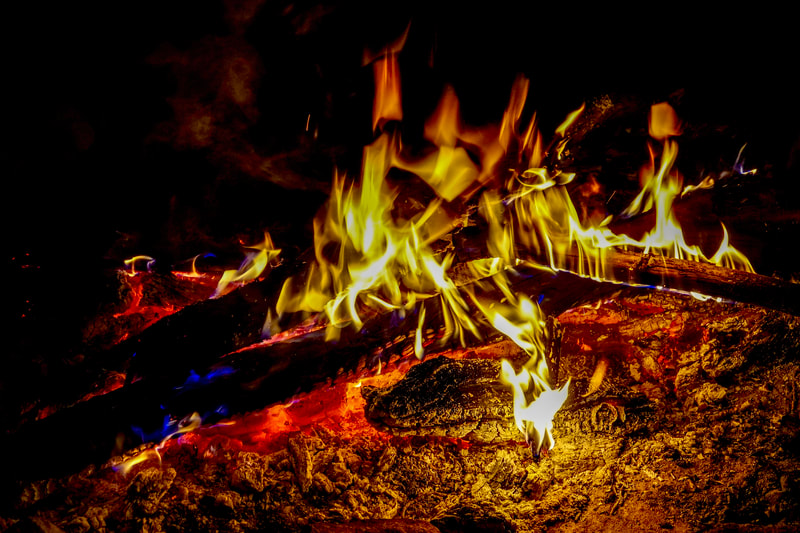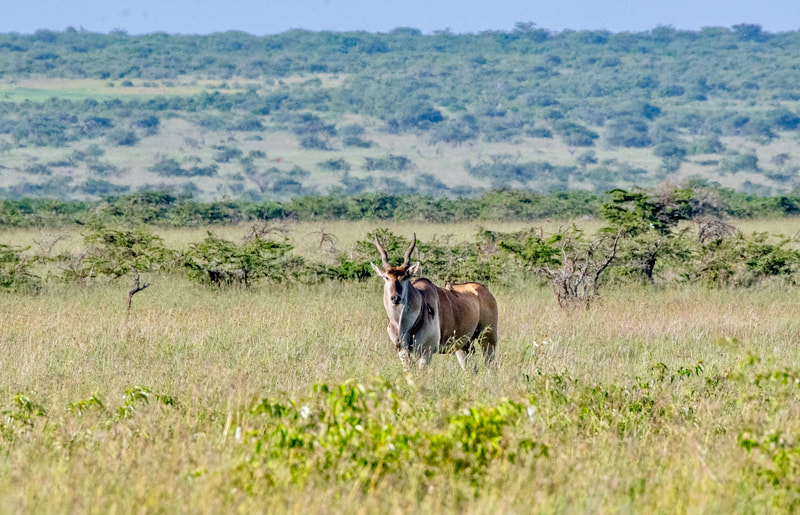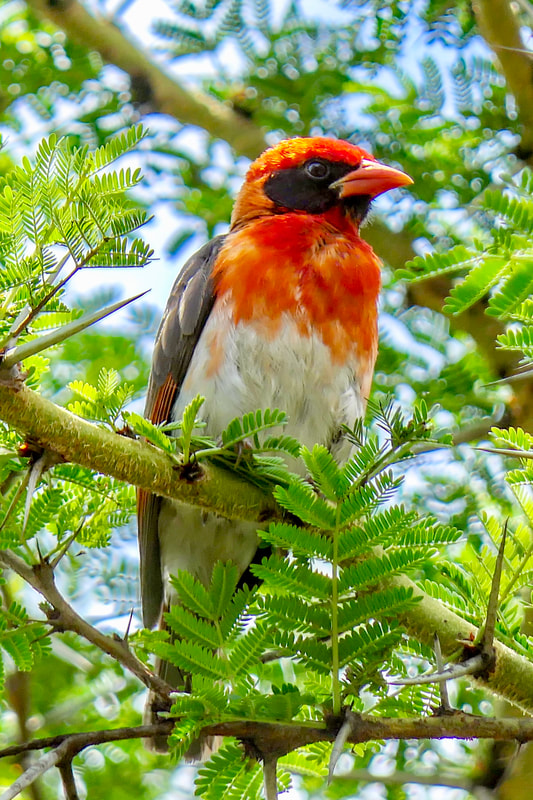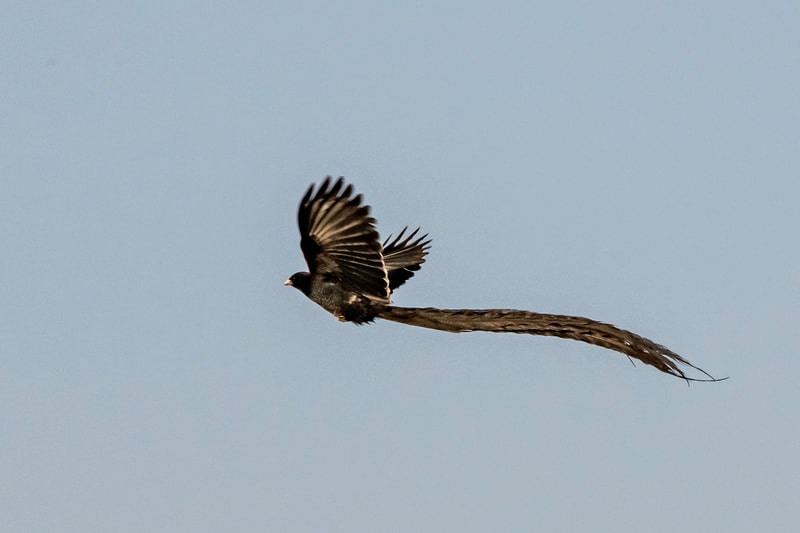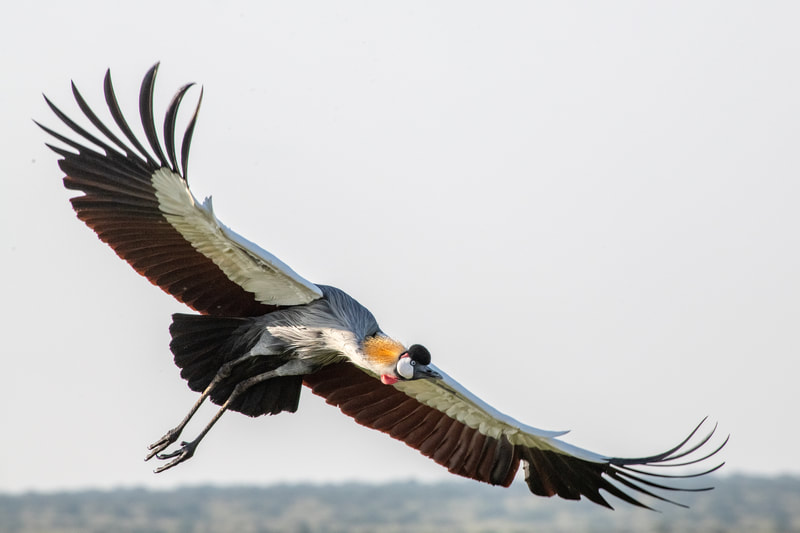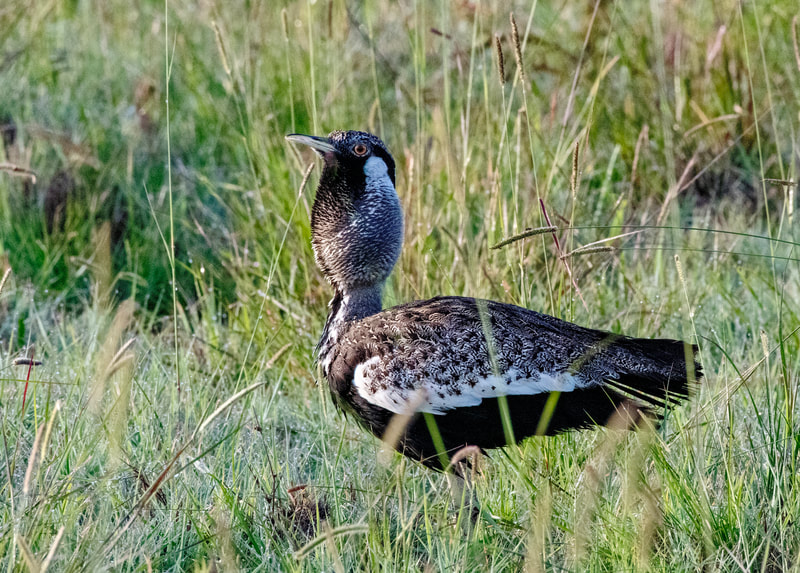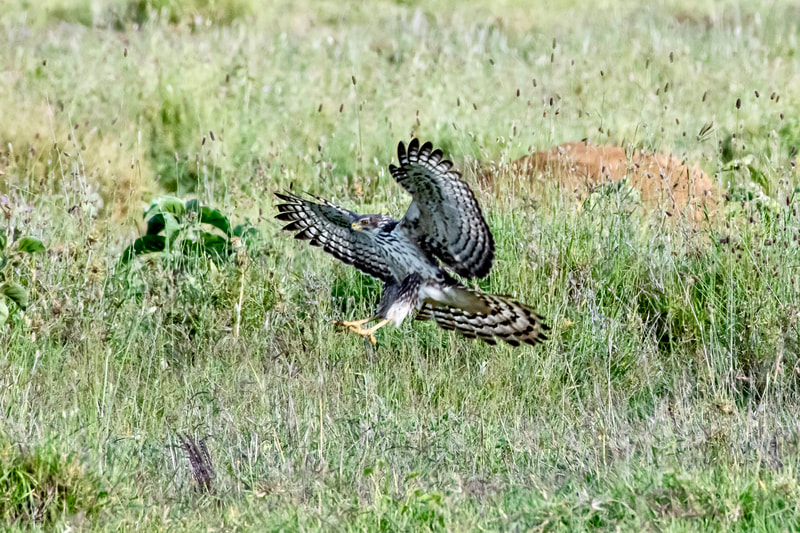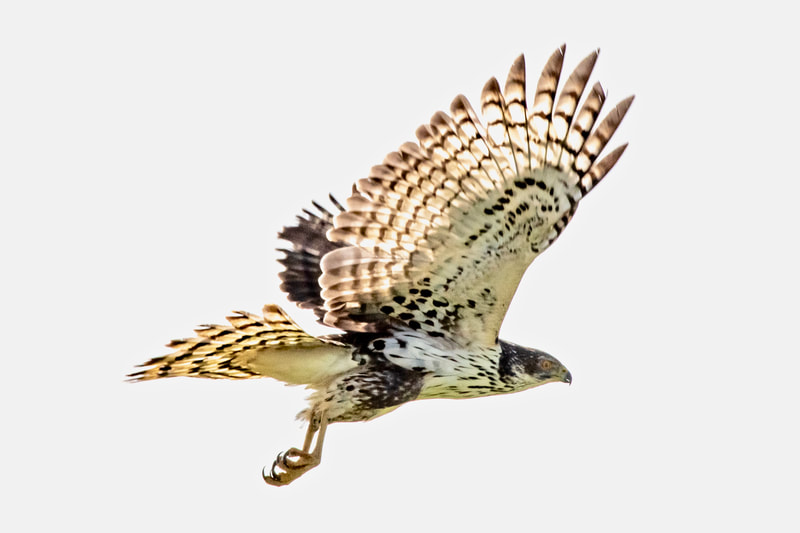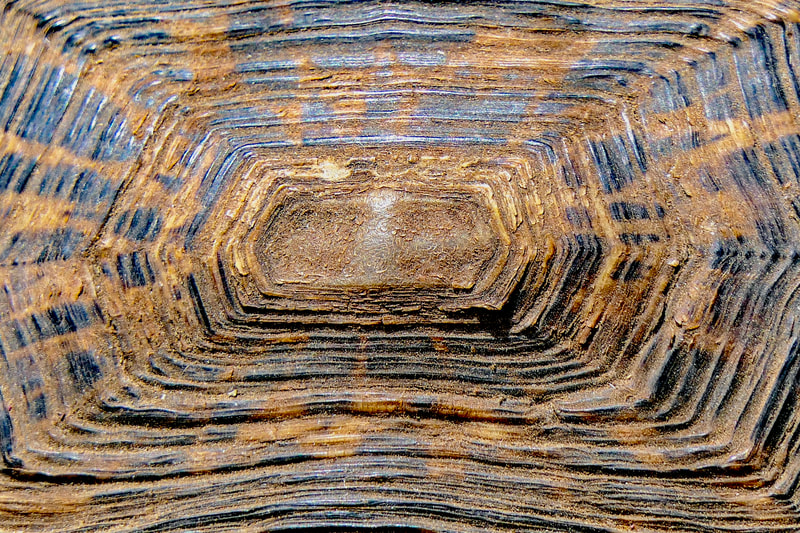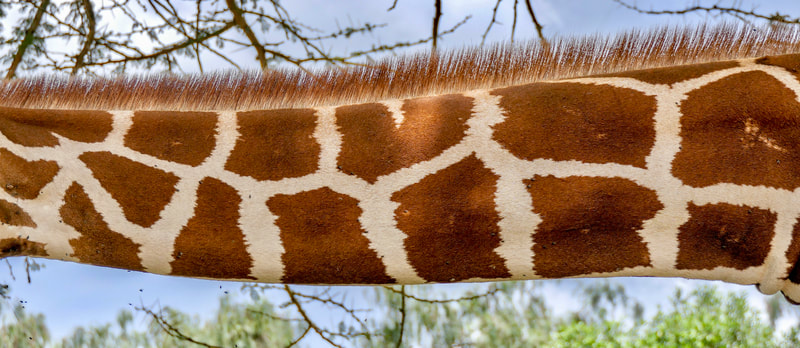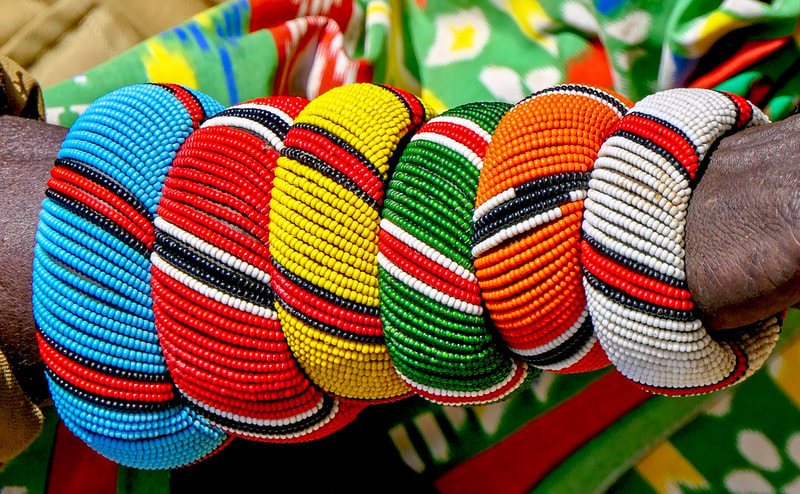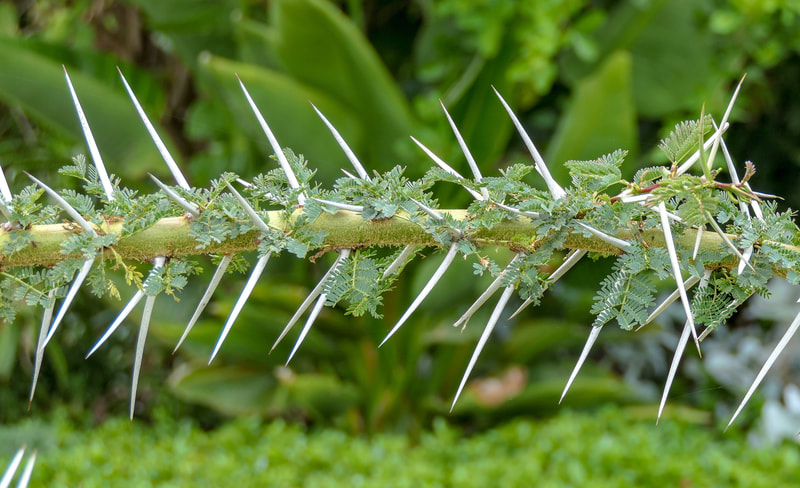Scroll down to the photos for this fascinating portion of the trip - Gallery #5. The text below describes it in some detail.
When I began planning this 2019 expedition to Northern Kenya, one thing I expected was that I was going to be hot almost all the time. After all, most of northern Kenya is desert or semi-desert, and some areas are among the driest and starkest places on earth. To a certain extent, those expectations were correct. Much of the area around Lake Turkana, the Chalbi Desert, and pretty much any lowland area we visited, was hot, and often roasting around midday in the sun. But to my surprise, most of the places where we stayed (north of Samburu on the northward leg, and before reaching Lake Baringo on our return southwards) were up in mountains and refreshingly cool. In one place (Marsabit), it was even a little bit chilly. Further, the scenery was spectacular, the people were friendly, colorful, and interesting, and the birdlife was rich. Wildlife isn't as plentiful as in the great savannah parks to the South, but there are some unusual species and it is remote and mostly overlooked by tourists. Over almost two weeks in this region, we saw hardly another soul.
This gallery contains quite a mix of photos, showing the many cool, lush, high-elevation sites where we stayed, but also some of the surrounding lands and peoples. For the most part, the places shown are individual mountains or small mountain ranges that rise like islands above the desert sands. As the hot air rises on the edges of the mountains, it cools and loses moisture, forming fog and rain. Combined with mountain springs, this means that many of these mountains have abundant water supplies and are covered with lush forests, even if 10 mies away or less, you would be in scalding desert sand. We were fortunate enough to stay in quite luxurious camps in several of these sites. I thought of them as "mountain oases" - lush islands of life above the surrounding dry lands.
The sites shown in this gallery include: Desert Rose Resort and surrounding areas; Mount Kulal (a low pyramidical, stand-alone mountain east of Lake Turkana where we visited as a day trip); Marsabit (a substantial range of volcanic mountains with a town and national park around the summit); Sabeche and Sarara Camps in/near the Matthews Range; and Ekorian's Mugie Camp further West, between Maralal and Lake Baringo. The latter may not fit exactly - it is not in a "mountain oasis" island, but it does sit atop the high-altitude Laikipia Plateau, and so is lush and cool relative to the deserts to the West, North, and East. Ekorian's is more "park-like", with high-altitude savannah and big game. Mt. Kulal and Marsabit have only a few photos here, as they are part of other galleries.
A highlight of this portion of the trip was the people in the lands between the mountains. Most of the area between Samburu and Desert Rose, and the areas around Sabeche and Sarara Camps are the domain of the Samburu people. Traditionally semi-nomadic though more settled now, they are pastoralists, of Nilotic heritage like the Maasai further south. I learned quite a bit about them, including that some have a substantial knowledge of astronomical events, stars and planets, and a deep connection to the planet Venus. We visited two different Samburu villages, and three "singing wells". At these wells, herdsmen climb down into the deep wells and pass water buckets up to others waiting by troughs above. While they do this, they "sing" (more like rhythmic chanting). According to what I was told, this serves to make the work more pleasant, but also is a call to their livestock (cattle, goats, donkeys, and camels) that water is being made available in the troughs. It is a very nice sight, and sounds - yet one more special highlight of the trip!
See also some YouTube videos showing the singing wells:
https://youtu.be/kvr1K9wa48U
https://youtu.be/M-G58cChZjk
https://youtu.be/N6kSFMBmpDU
After this section of the trip, there was still more adventure to come. We visited four of Kenya's famous Rift Valley lakes (Baringo, Bogoria, Nakuru, and Naivasha) on our way back to Nairobi, staying at Baringo and Nakuru. For that section of the trip, click here. For the "mountain oases" scroll down.
When I began planning this 2019 expedition to Northern Kenya, one thing I expected was that I was going to be hot almost all the time. After all, most of northern Kenya is desert or semi-desert, and some areas are among the driest and starkest places on earth. To a certain extent, those expectations were correct. Much of the area around Lake Turkana, the Chalbi Desert, and pretty much any lowland area we visited, was hot, and often roasting around midday in the sun. But to my surprise, most of the places where we stayed (north of Samburu on the northward leg, and before reaching Lake Baringo on our return southwards) were up in mountains and refreshingly cool. In one place (Marsabit), it was even a little bit chilly. Further, the scenery was spectacular, the people were friendly, colorful, and interesting, and the birdlife was rich. Wildlife isn't as plentiful as in the great savannah parks to the South, but there are some unusual species and it is remote and mostly overlooked by tourists. Over almost two weeks in this region, we saw hardly another soul.
This gallery contains quite a mix of photos, showing the many cool, lush, high-elevation sites where we stayed, but also some of the surrounding lands and peoples. For the most part, the places shown are individual mountains or small mountain ranges that rise like islands above the desert sands. As the hot air rises on the edges of the mountains, it cools and loses moisture, forming fog and rain. Combined with mountain springs, this means that many of these mountains have abundant water supplies and are covered with lush forests, even if 10 mies away or less, you would be in scalding desert sand. We were fortunate enough to stay in quite luxurious camps in several of these sites. I thought of them as "mountain oases" - lush islands of life above the surrounding dry lands.
The sites shown in this gallery include: Desert Rose Resort and surrounding areas; Mount Kulal (a low pyramidical, stand-alone mountain east of Lake Turkana where we visited as a day trip); Marsabit (a substantial range of volcanic mountains with a town and national park around the summit); Sabeche and Sarara Camps in/near the Matthews Range; and Ekorian's Mugie Camp further West, between Maralal and Lake Baringo. The latter may not fit exactly - it is not in a "mountain oasis" island, but it does sit atop the high-altitude Laikipia Plateau, and so is lush and cool relative to the deserts to the West, North, and East. Ekorian's is more "park-like", with high-altitude savannah and big game. Mt. Kulal and Marsabit have only a few photos here, as they are part of other galleries.
A highlight of this portion of the trip was the people in the lands between the mountains. Most of the area between Samburu and Desert Rose, and the areas around Sabeche and Sarara Camps are the domain of the Samburu people. Traditionally semi-nomadic though more settled now, they are pastoralists, of Nilotic heritage like the Maasai further south. I learned quite a bit about them, including that some have a substantial knowledge of astronomical events, stars and planets, and a deep connection to the planet Venus. We visited two different Samburu villages, and three "singing wells". At these wells, herdsmen climb down into the deep wells and pass water buckets up to others waiting by troughs above. While they do this, they "sing" (more like rhythmic chanting). According to what I was told, this serves to make the work more pleasant, but also is a call to their livestock (cattle, goats, donkeys, and camels) that water is being made available in the troughs. It is a very nice sight, and sounds - yet one more special highlight of the trip!
See also some YouTube videos showing the singing wells:
https://youtu.be/kvr1K9wa48U
https://youtu.be/M-G58cChZjk
https://youtu.be/N6kSFMBmpDU
After this section of the trip, there was still more adventure to come. We visited four of Kenya's famous Rift Valley lakes (Baringo, Bogoria, Nakuru, and Naivasha) on our way back to Nairobi, staying at Baringo and Nakuru. For that section of the trip, click here. For the "mountain oases" scroll down.







